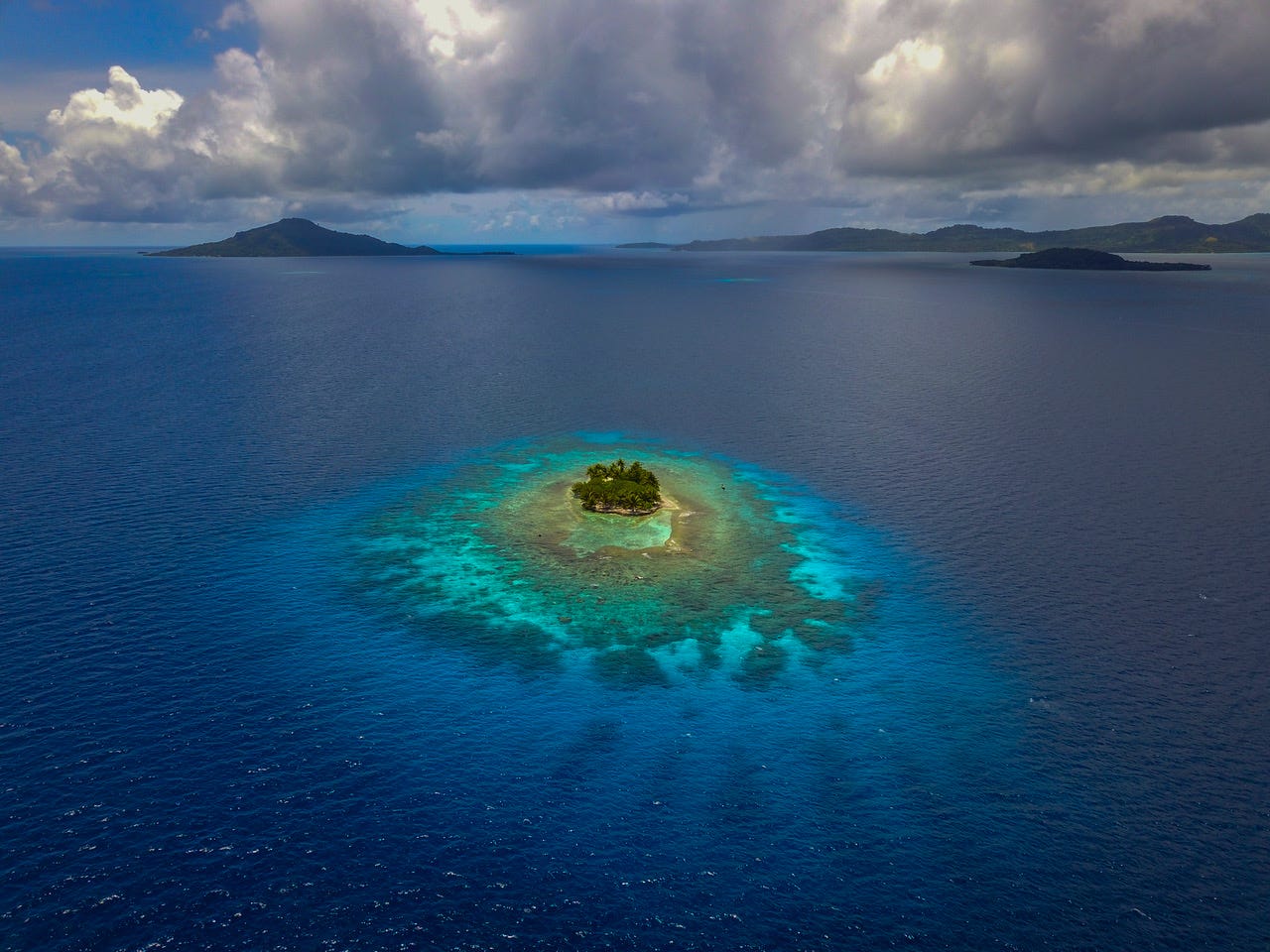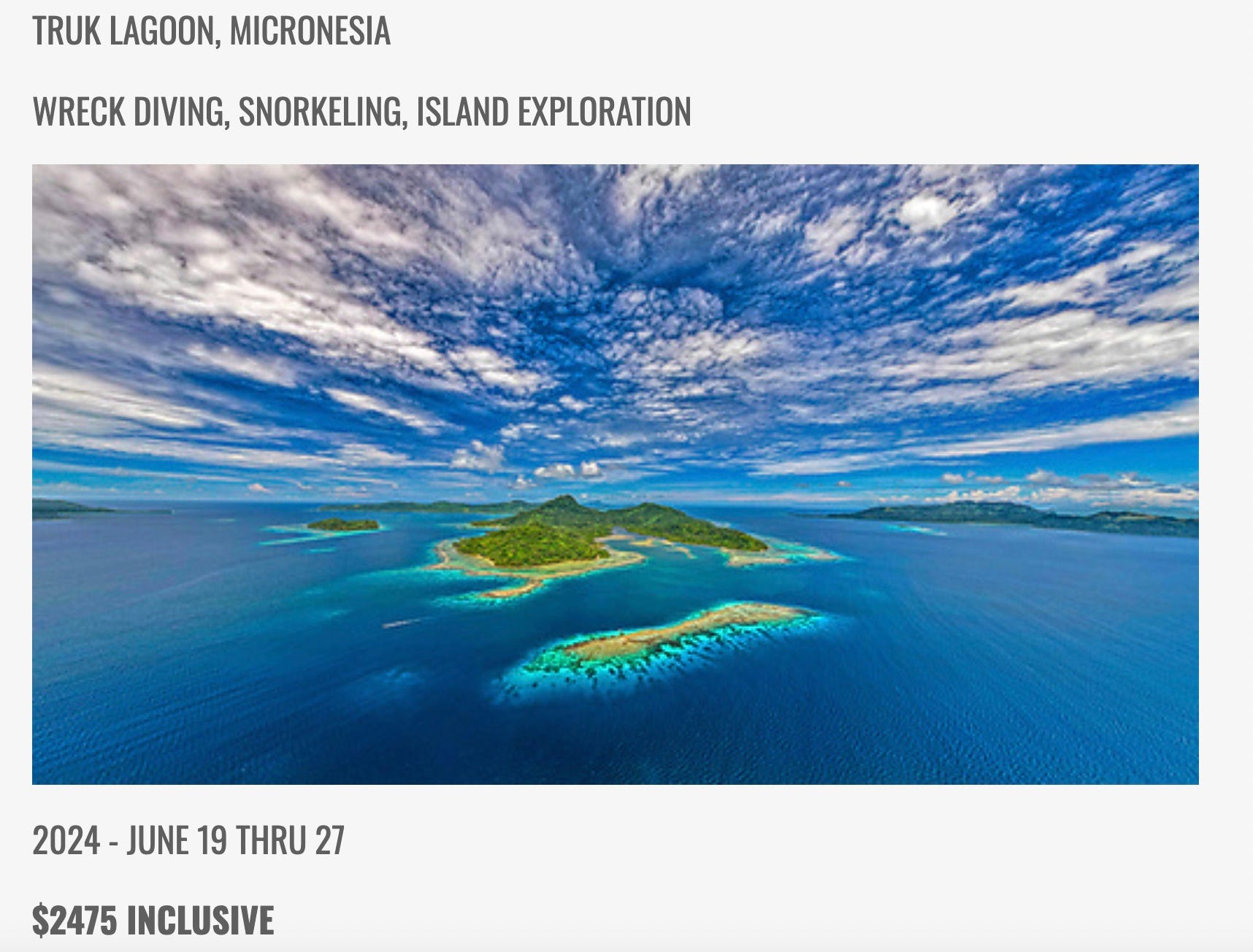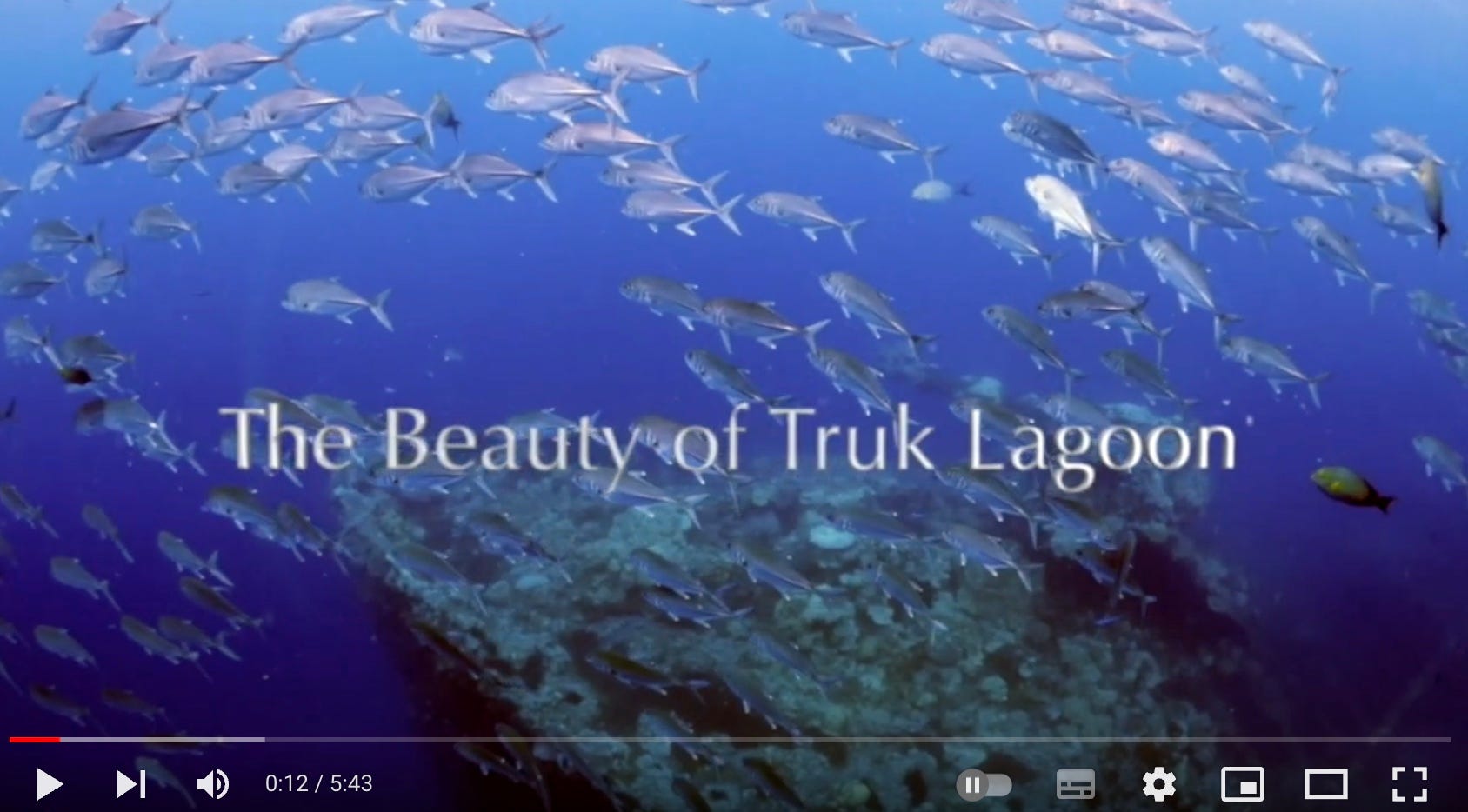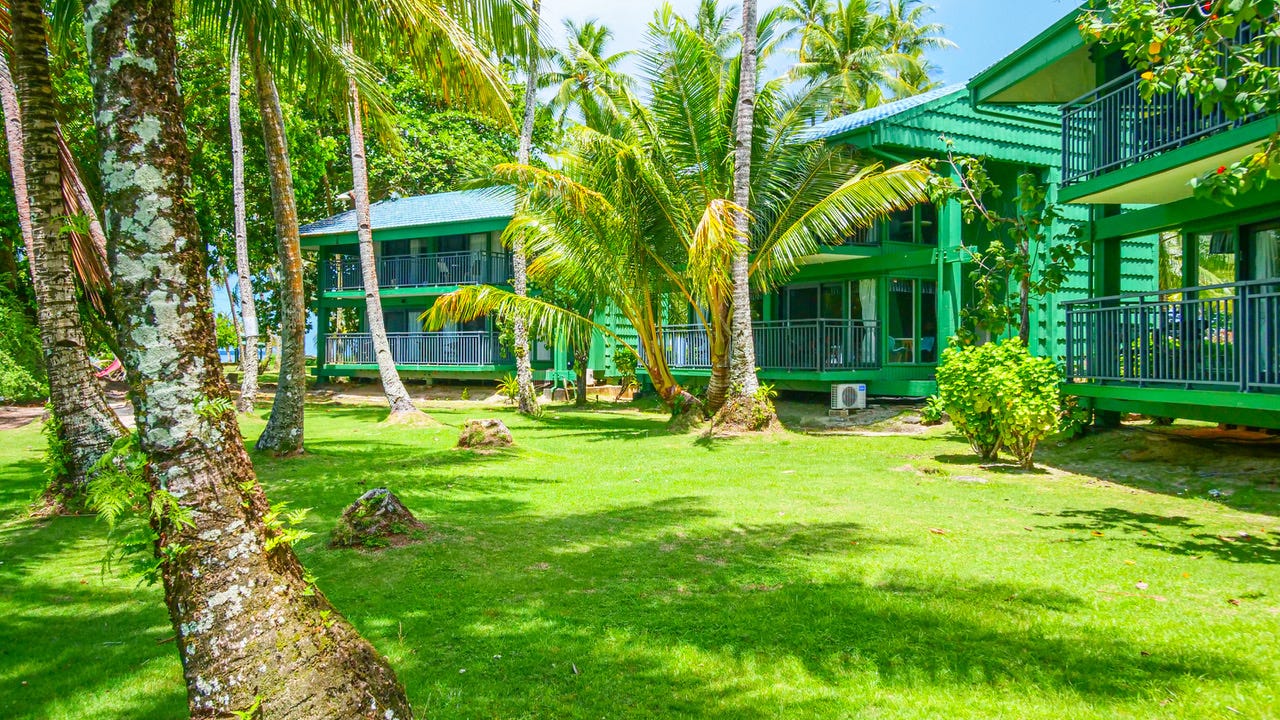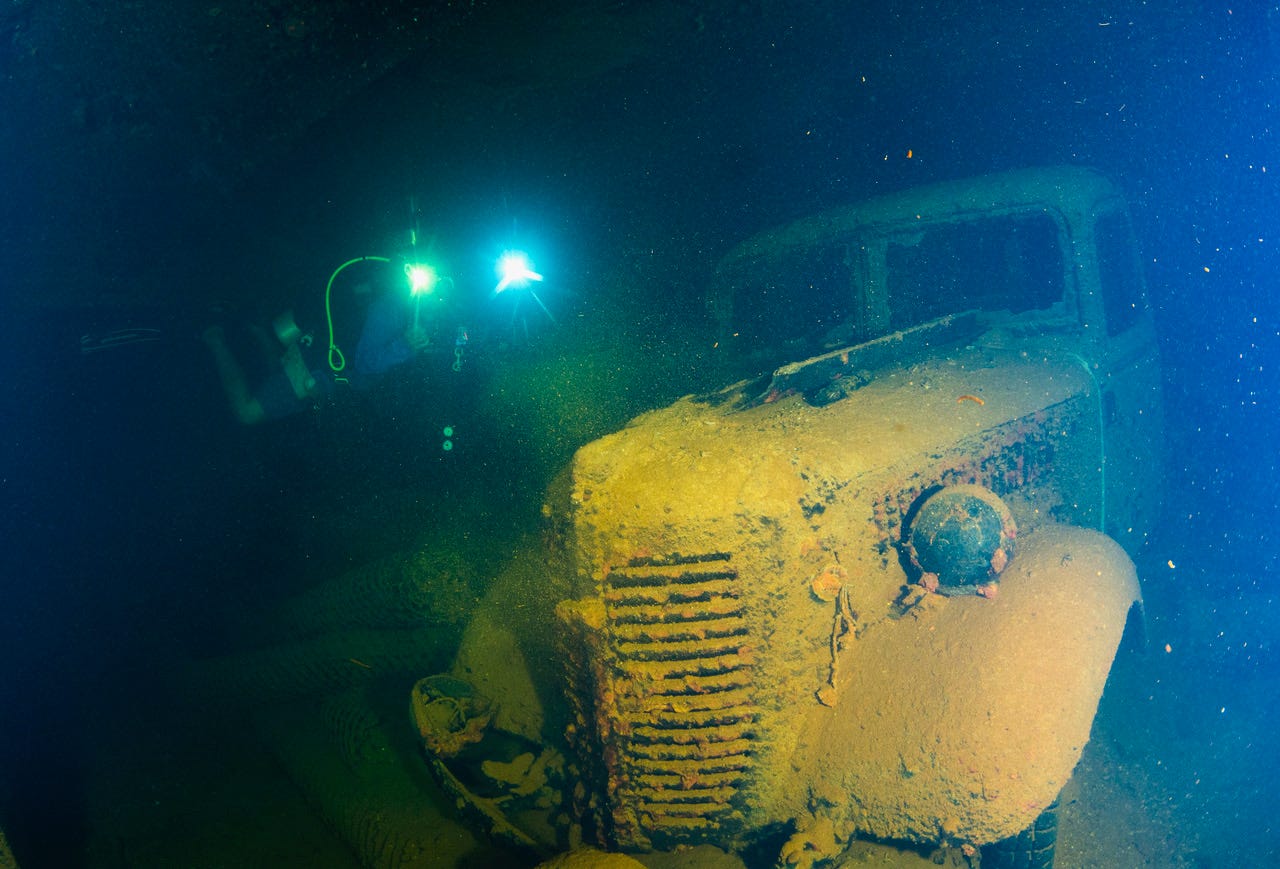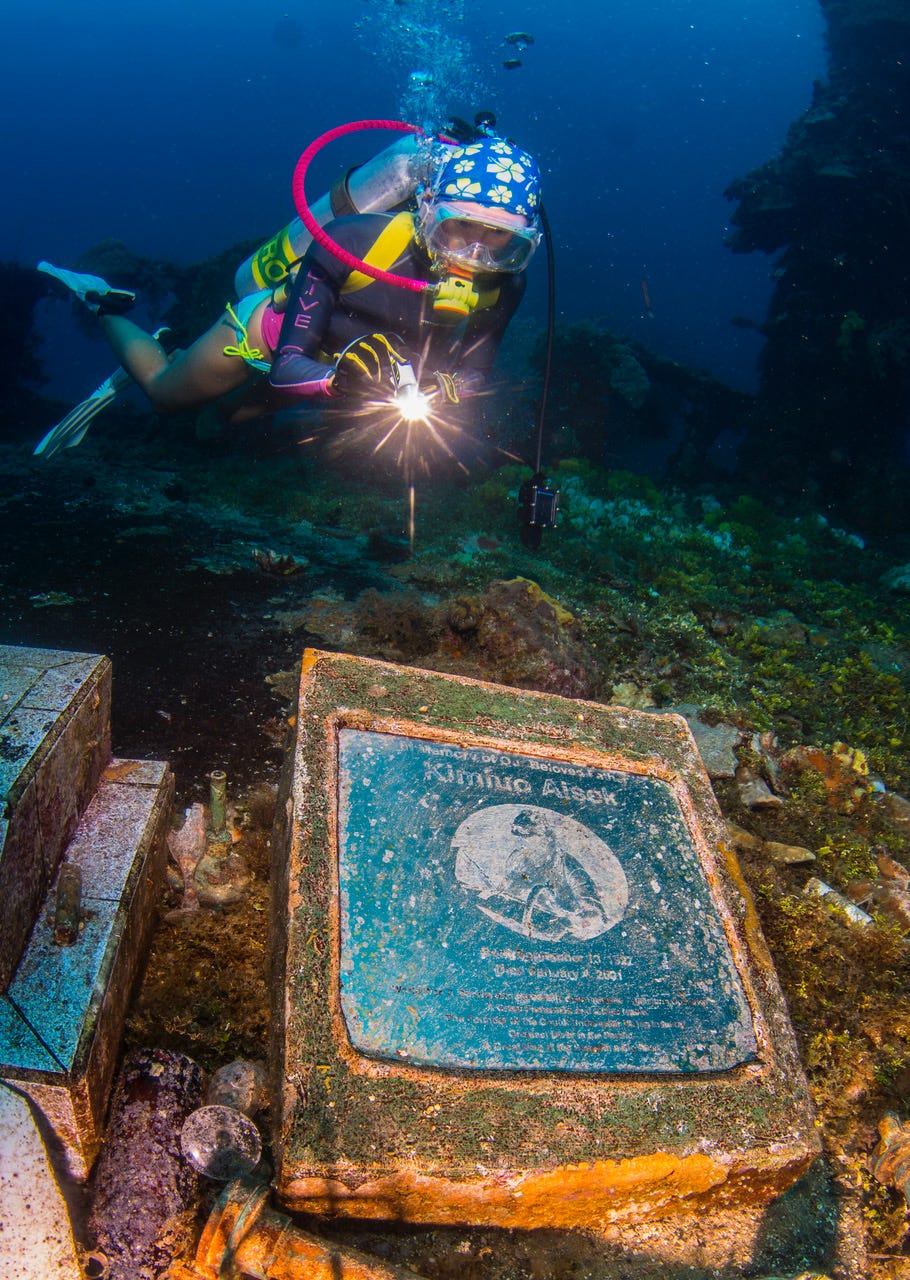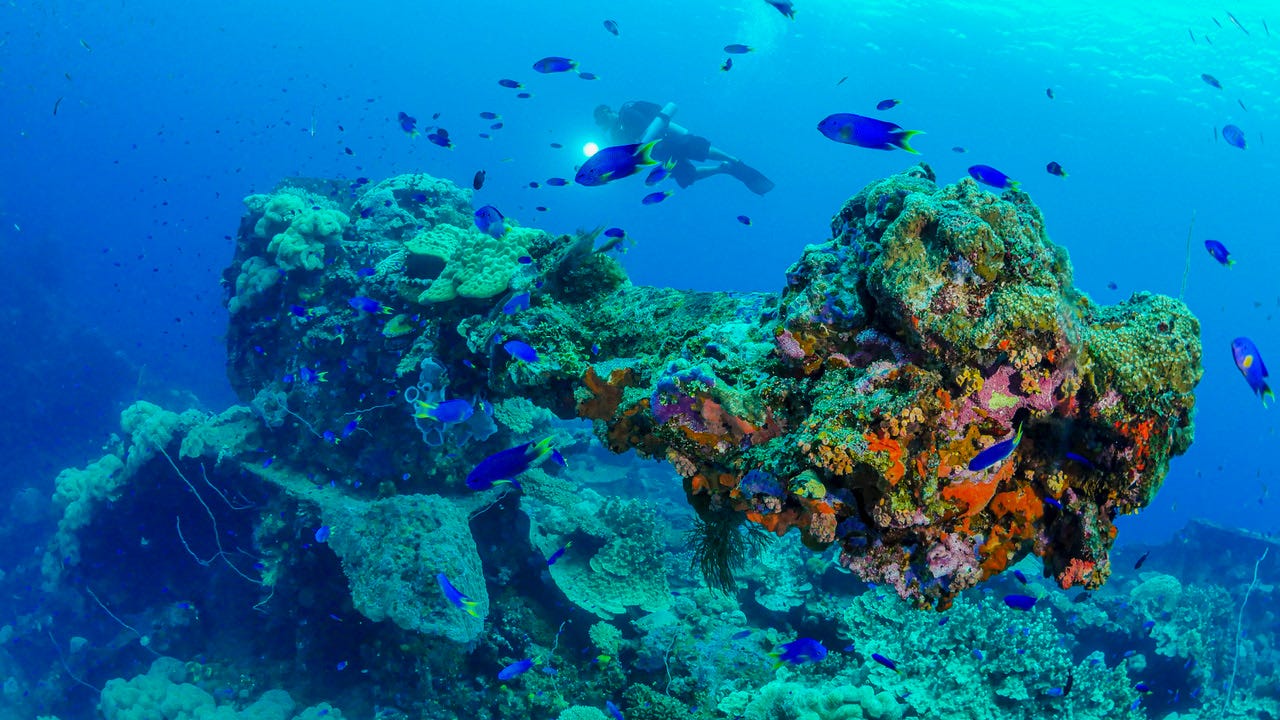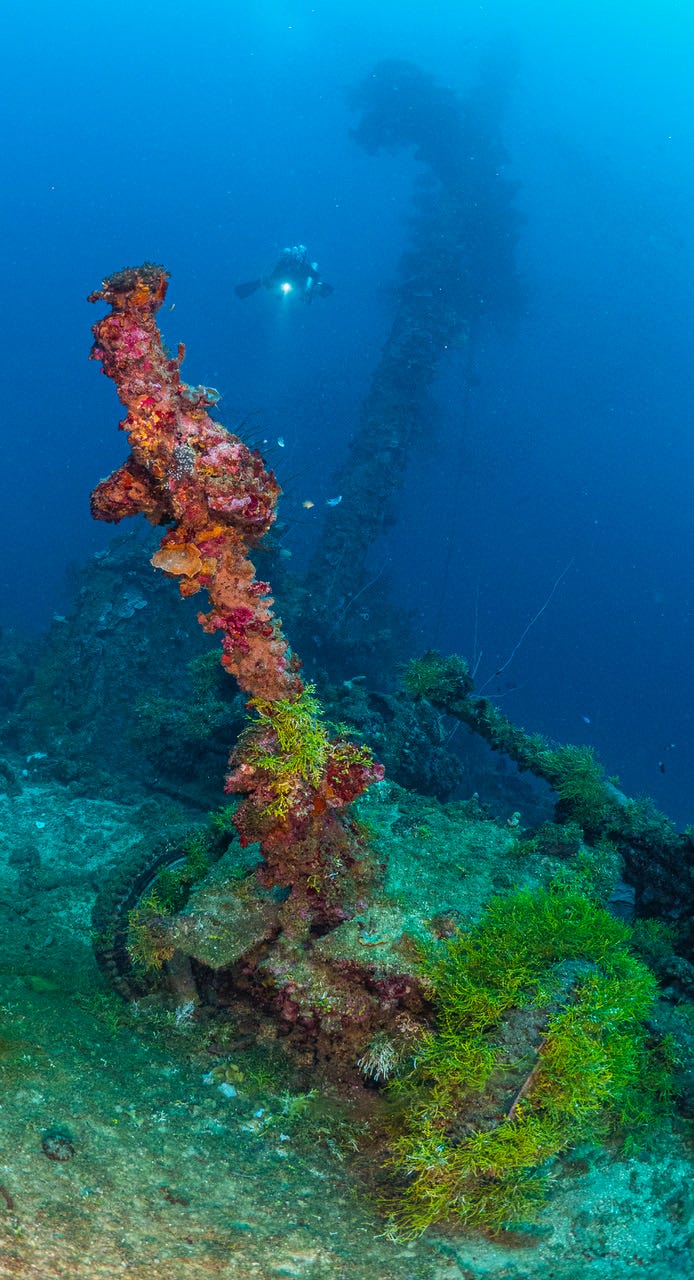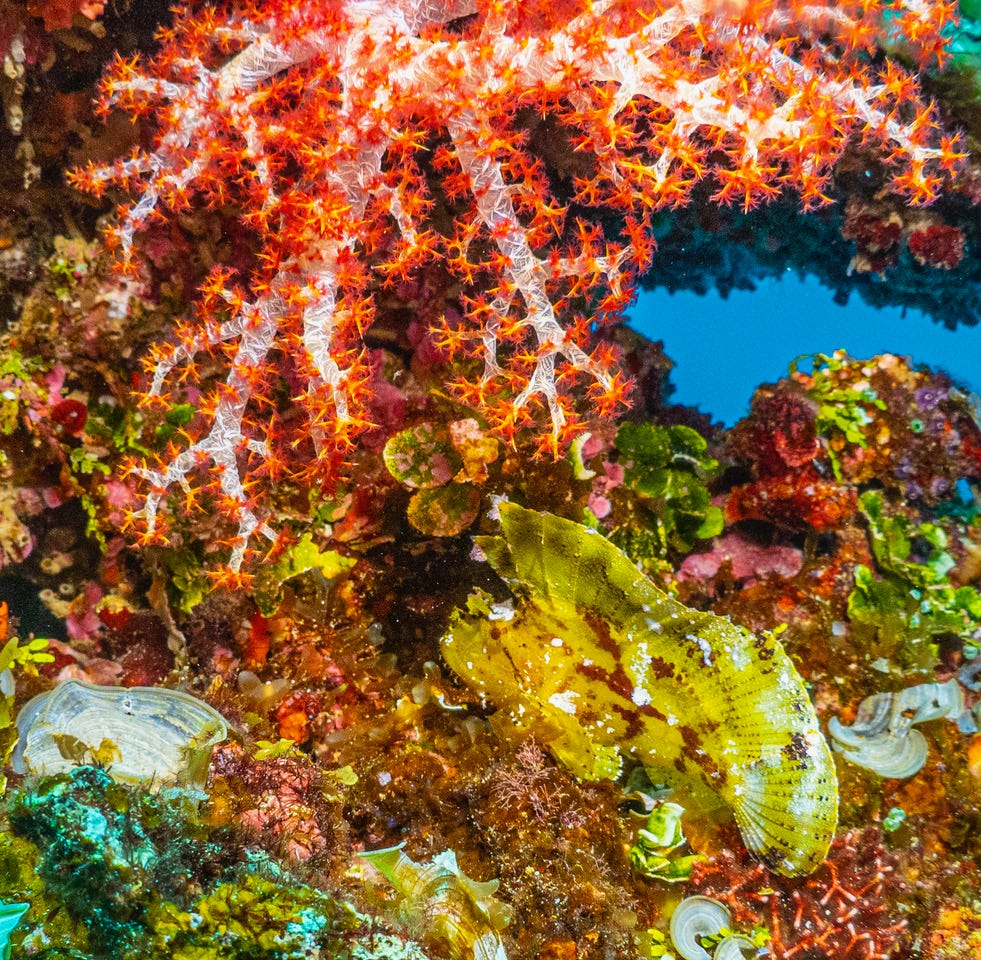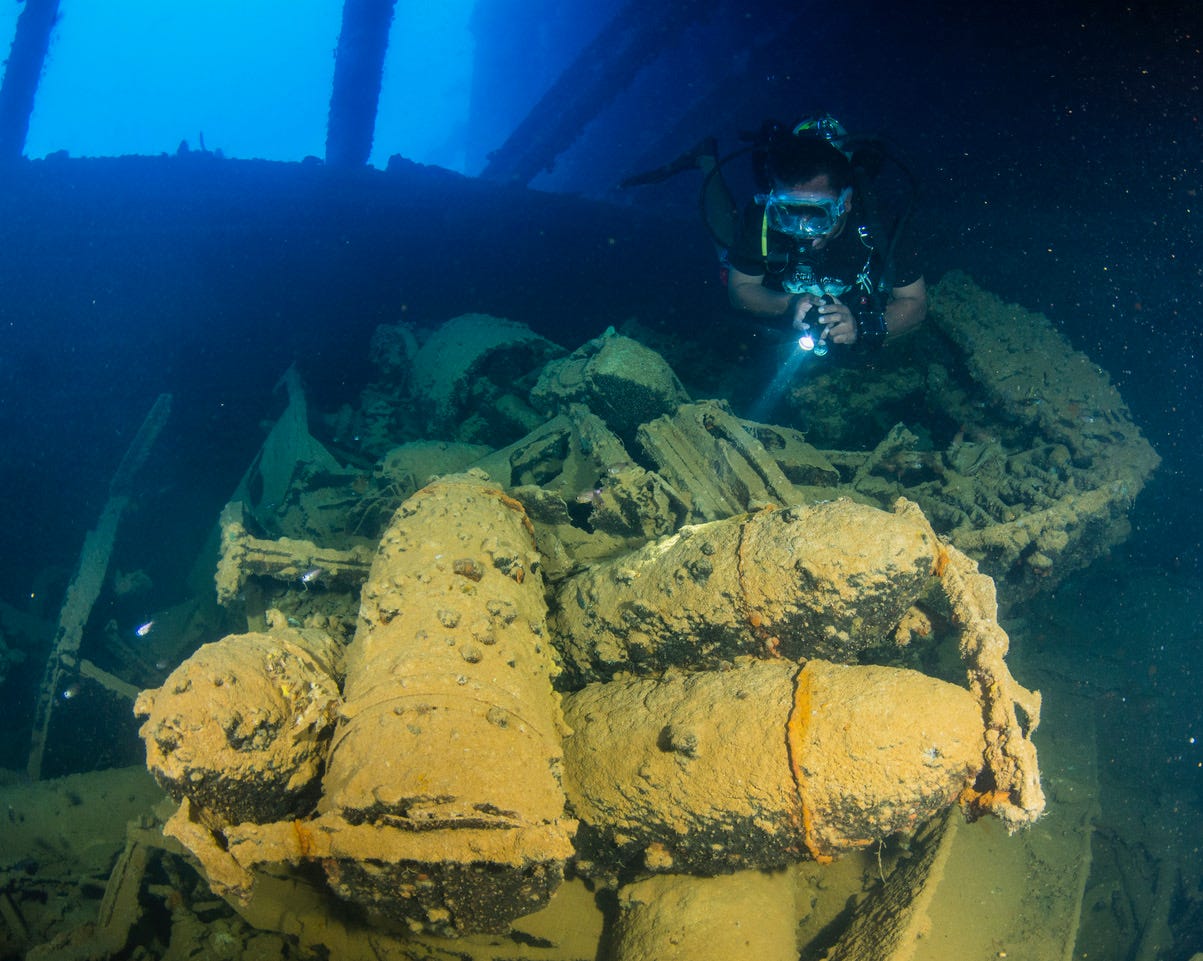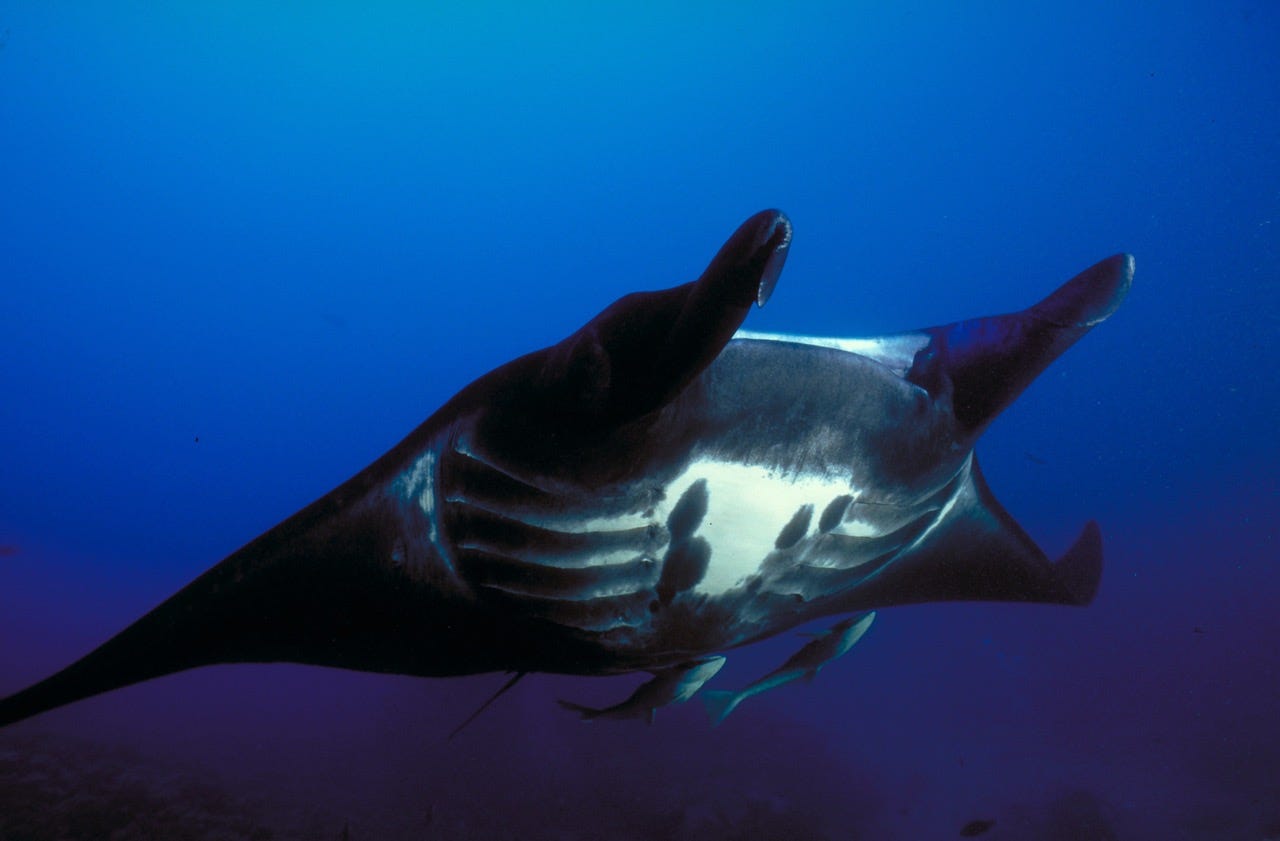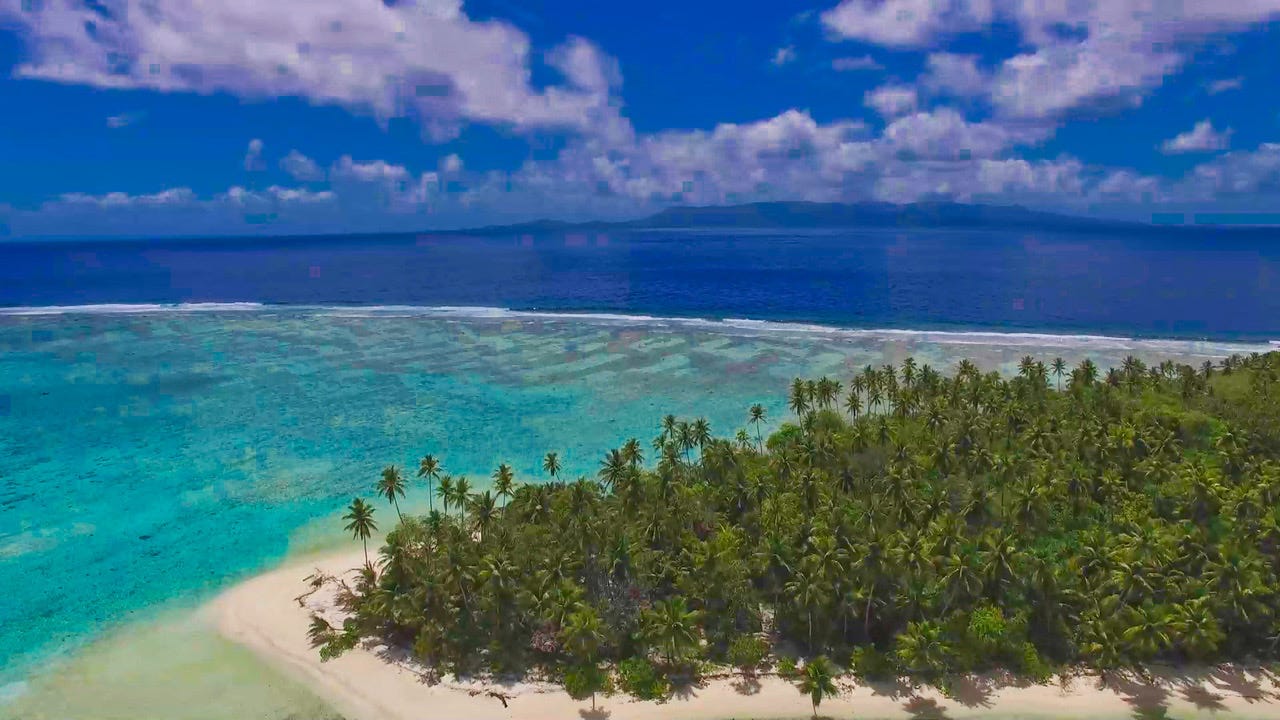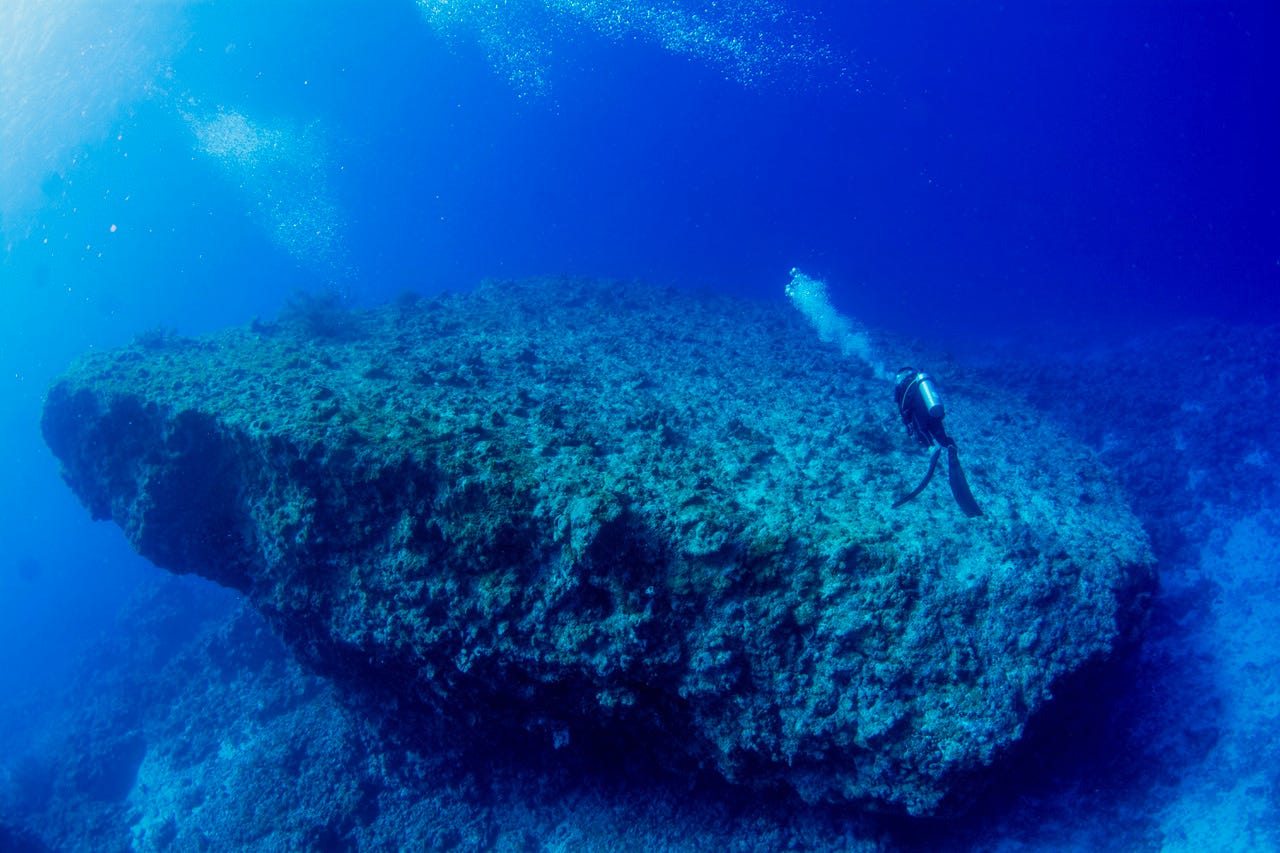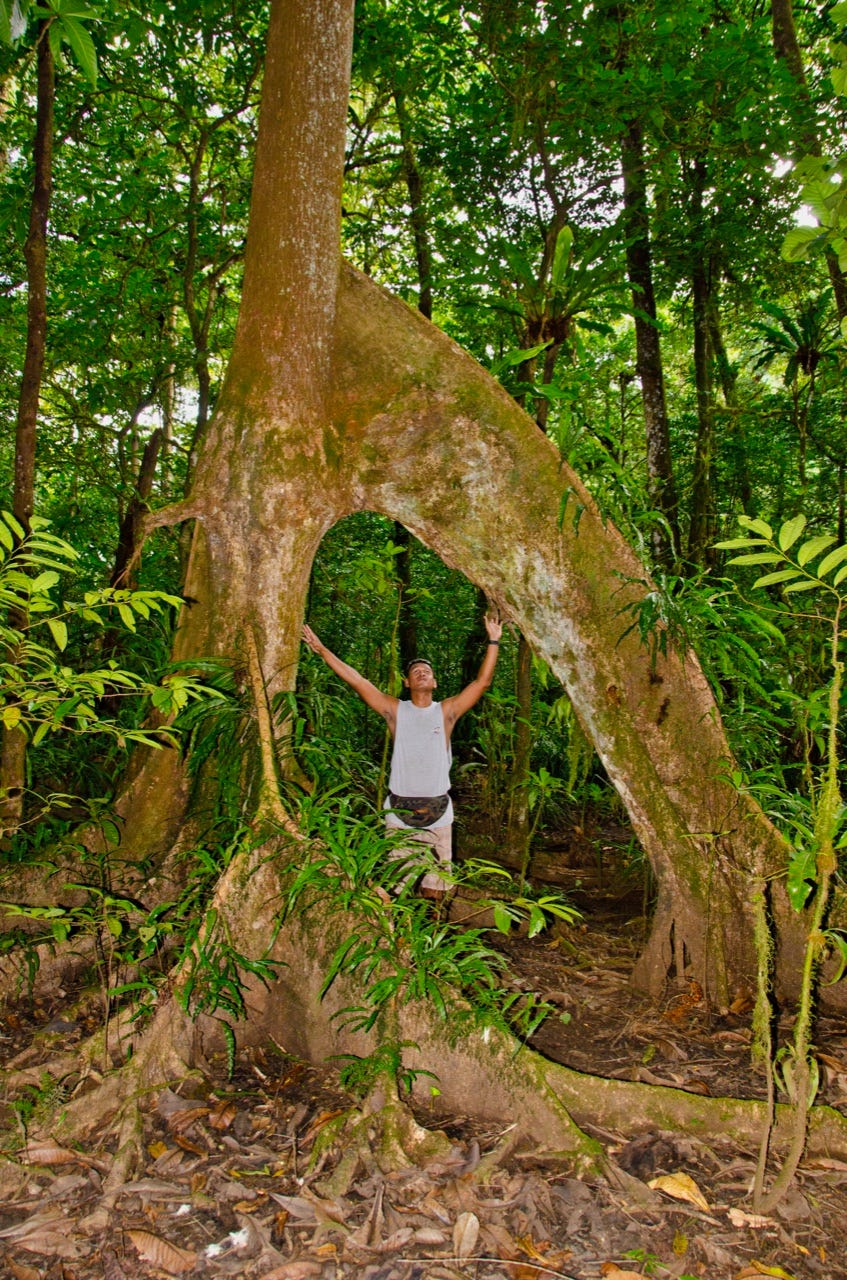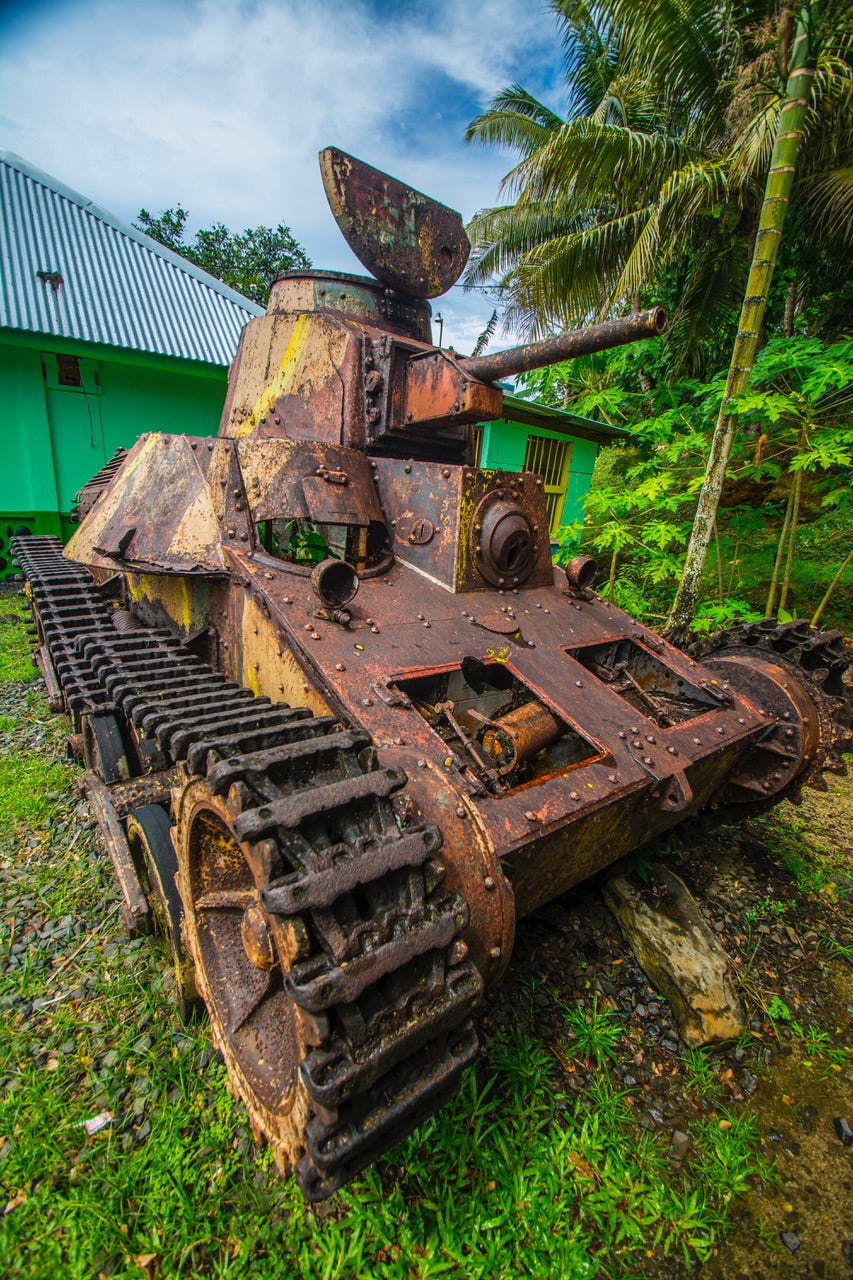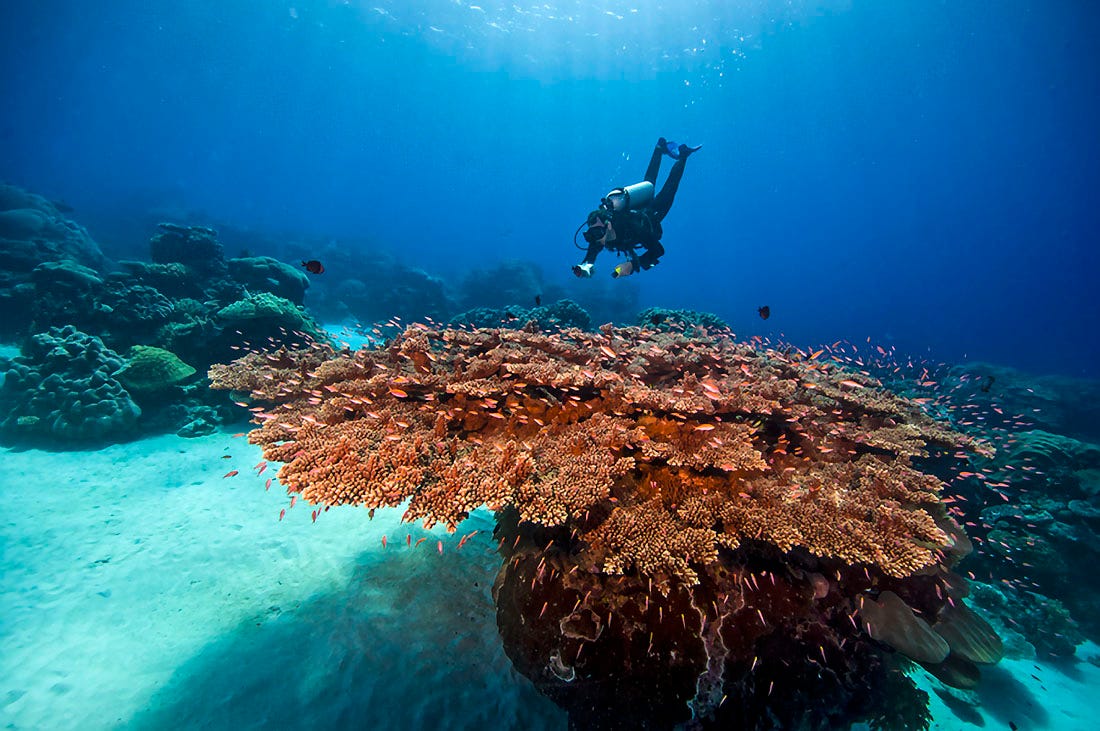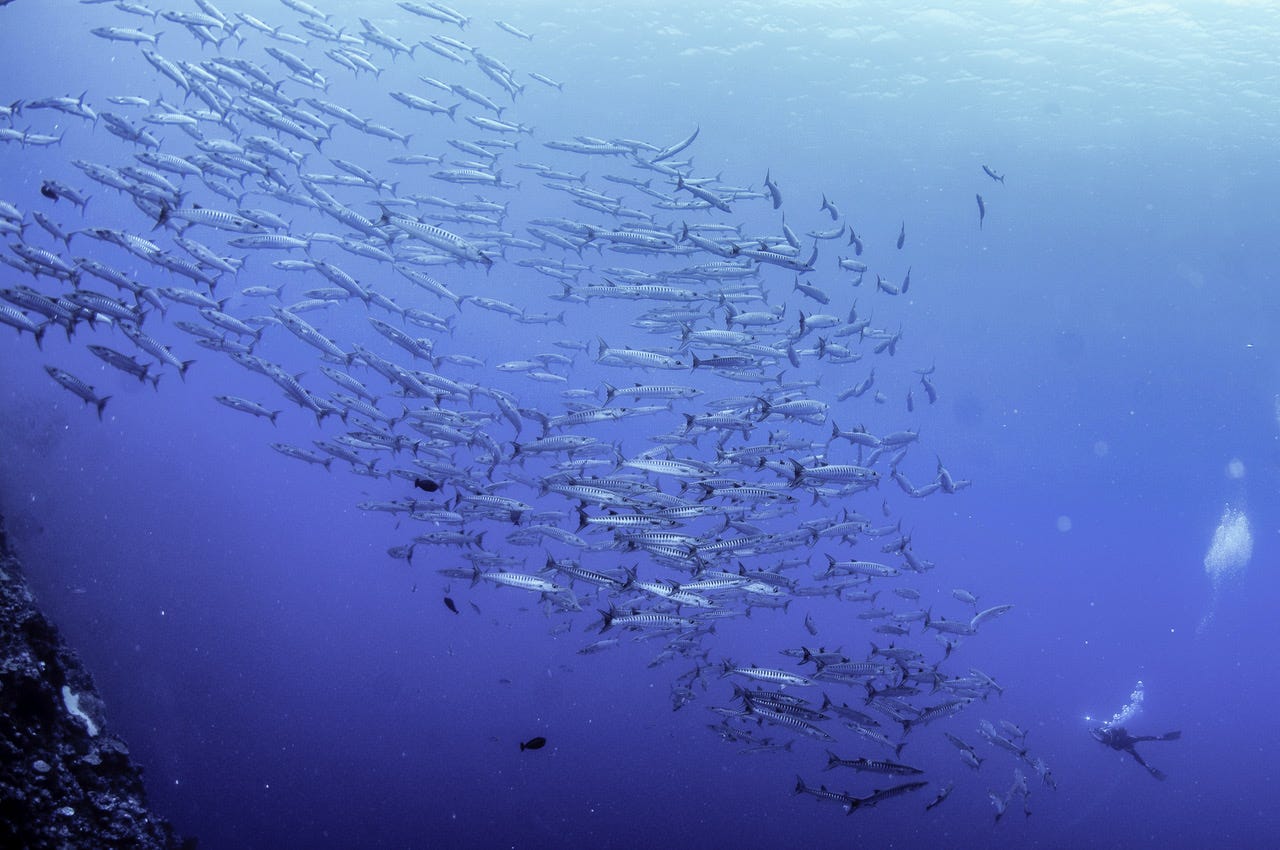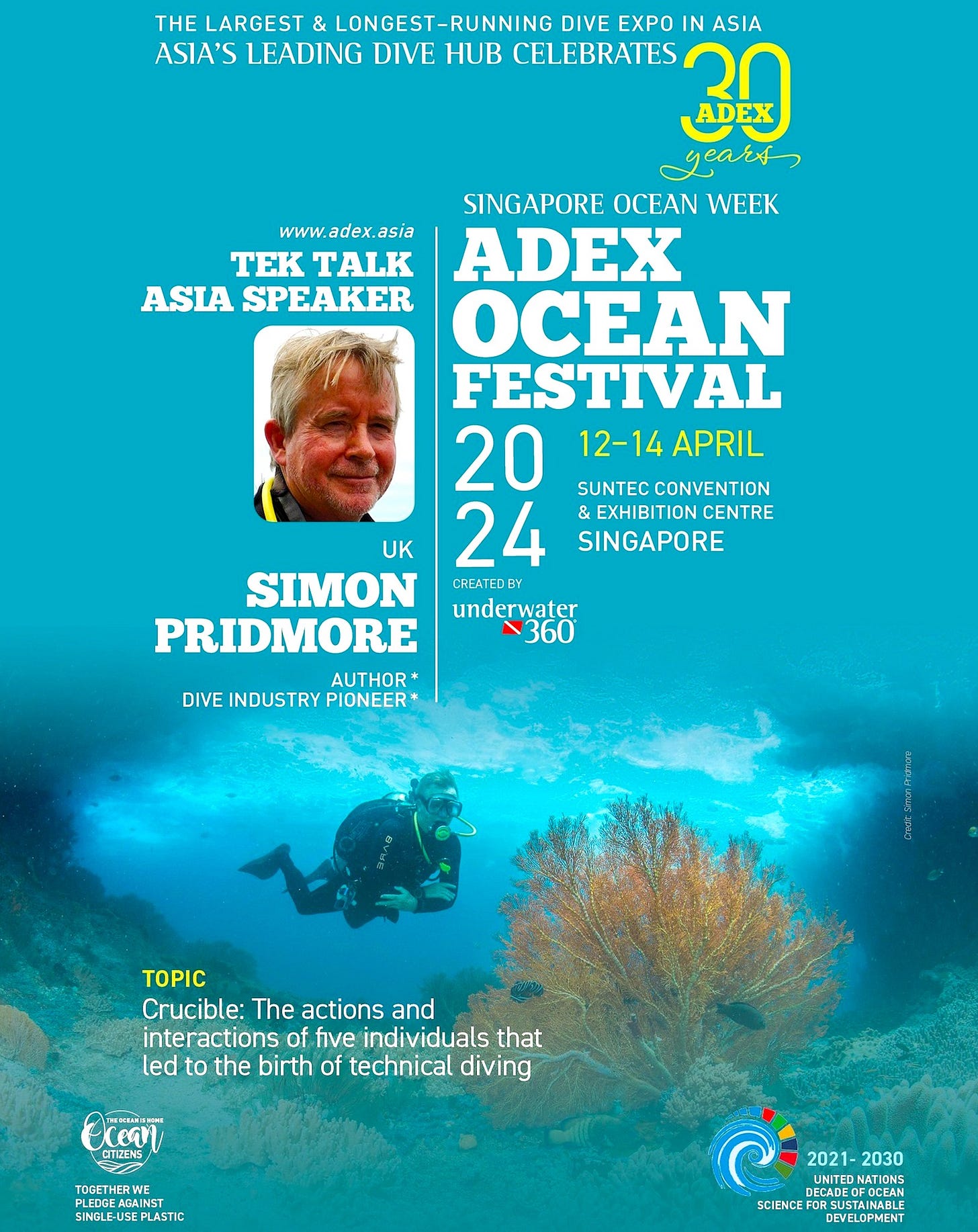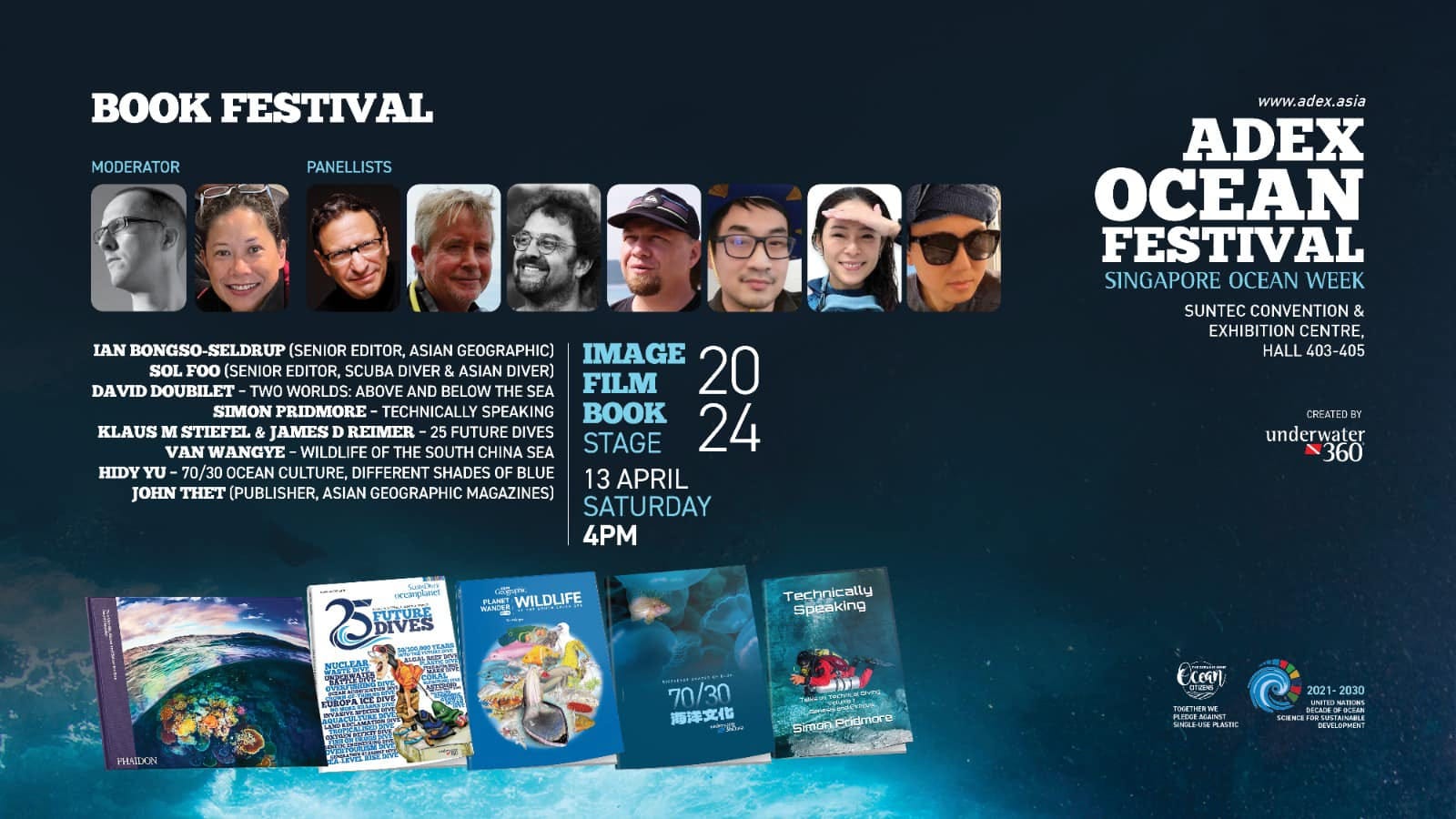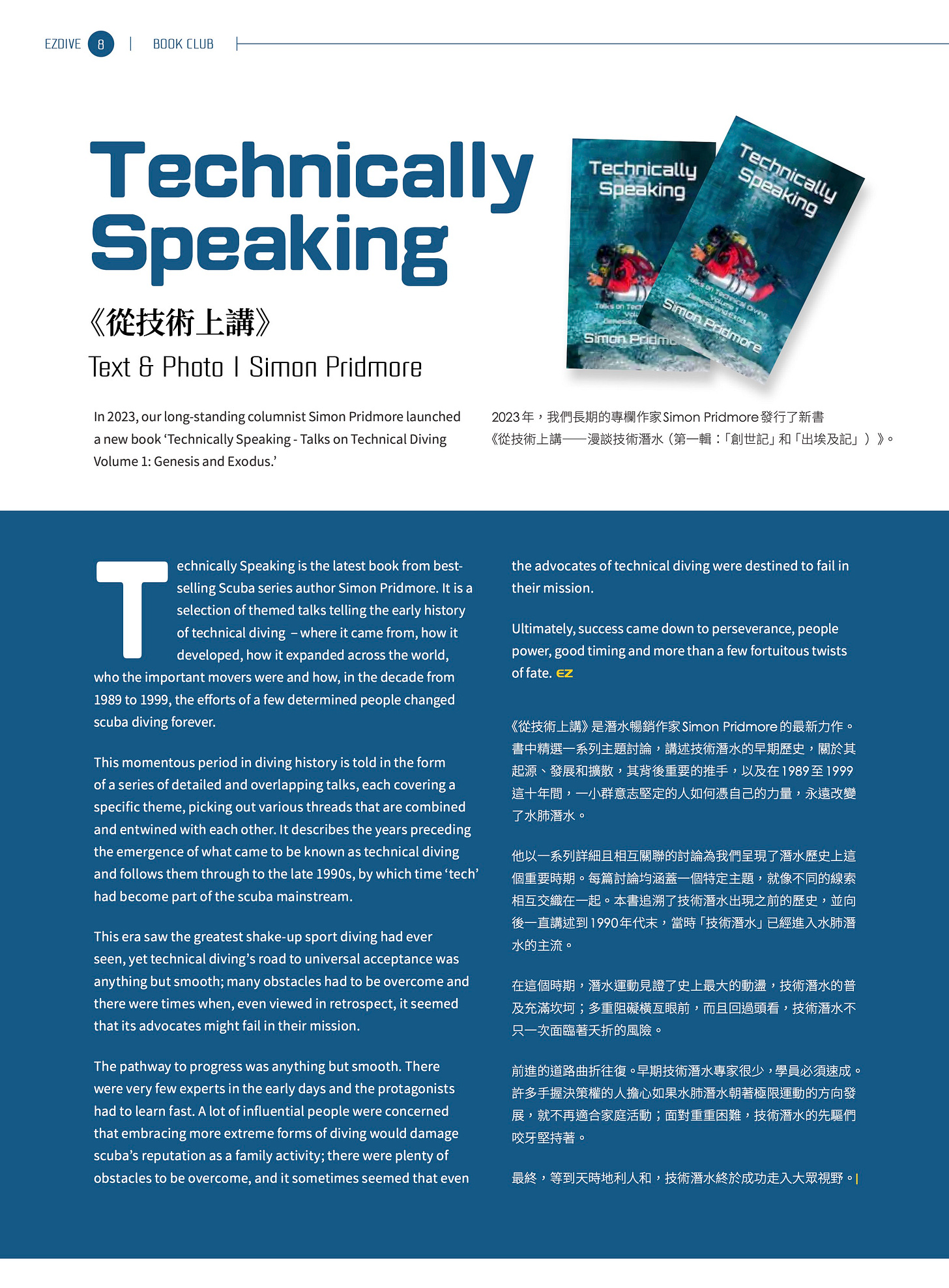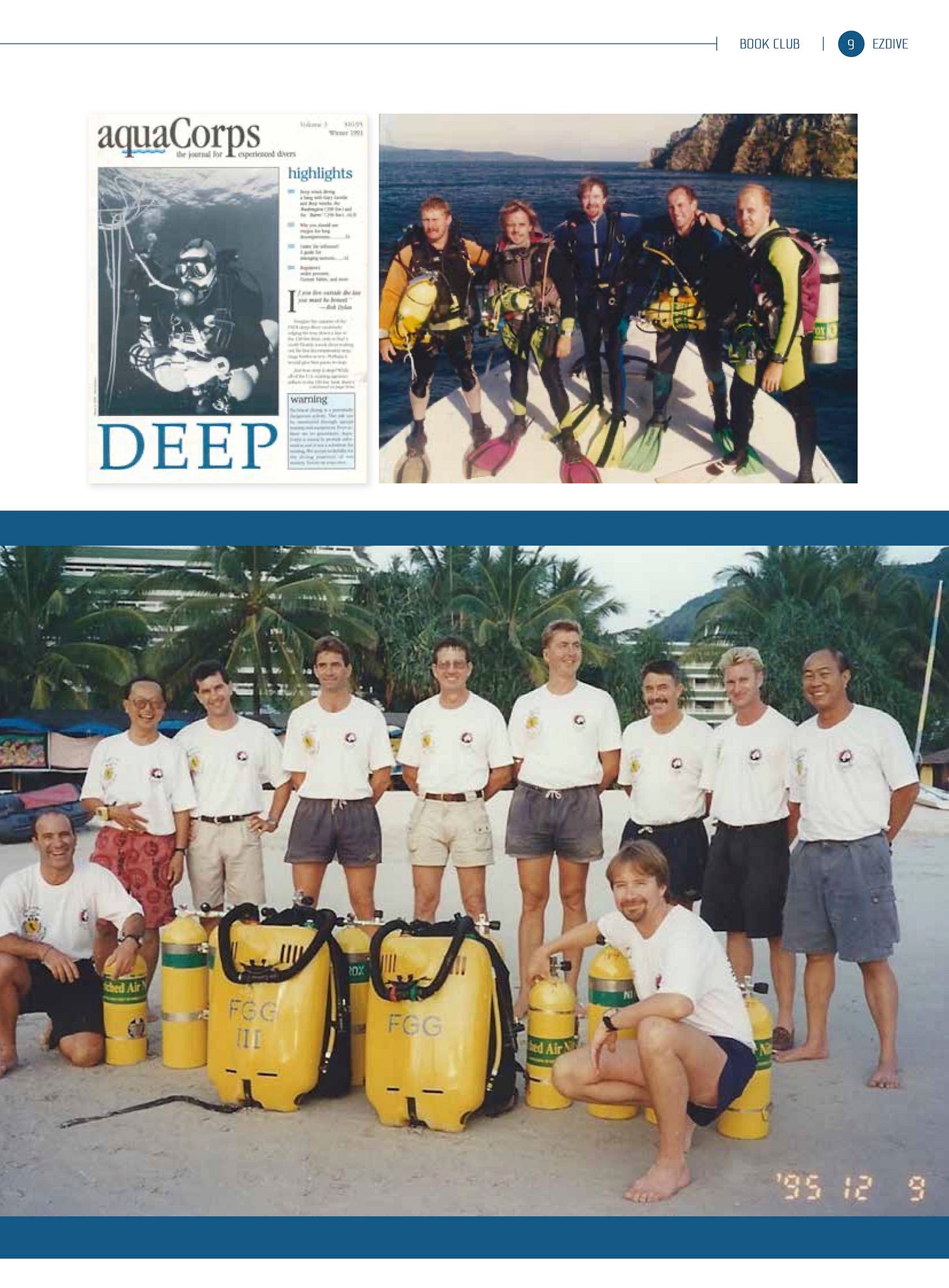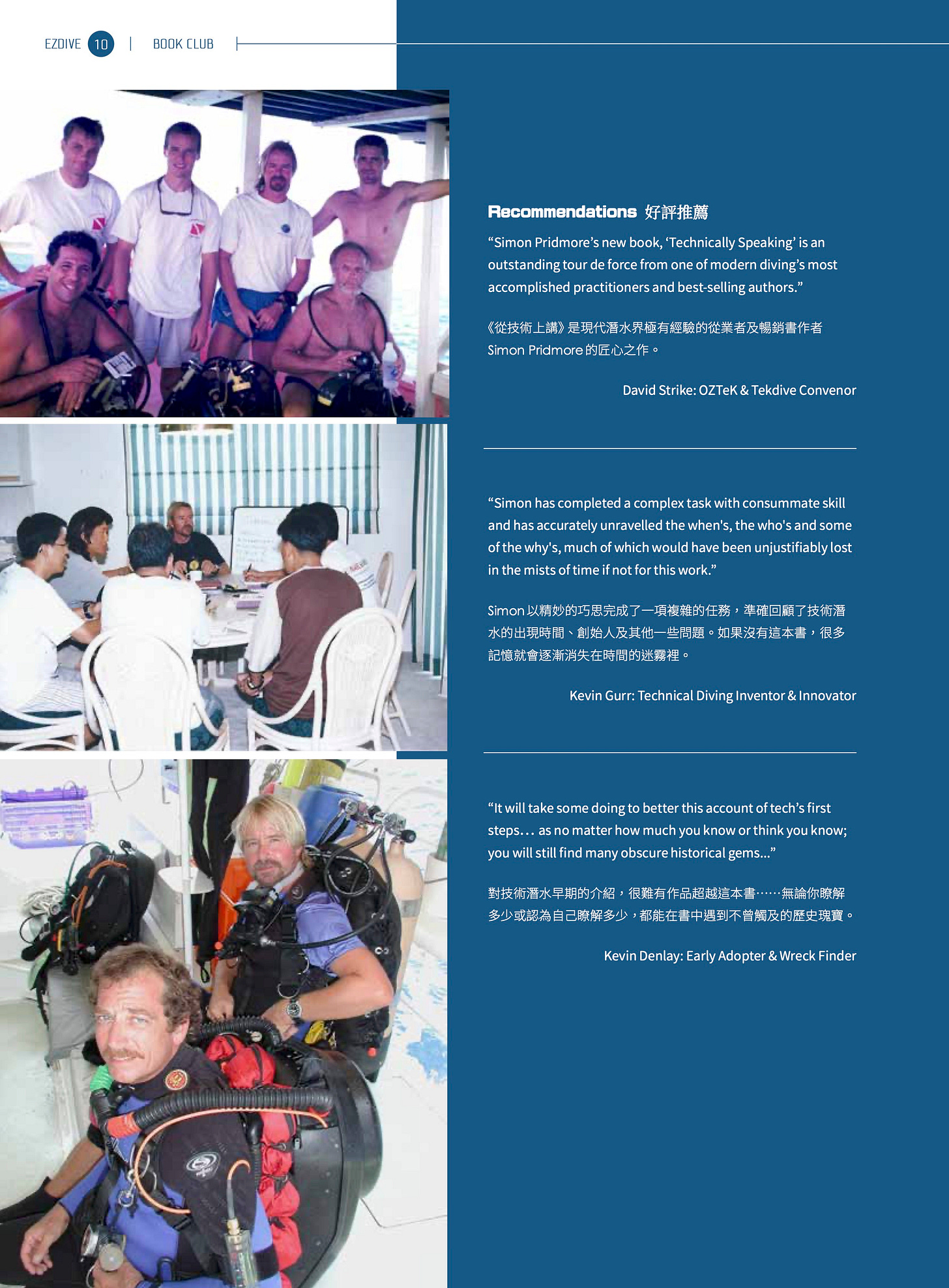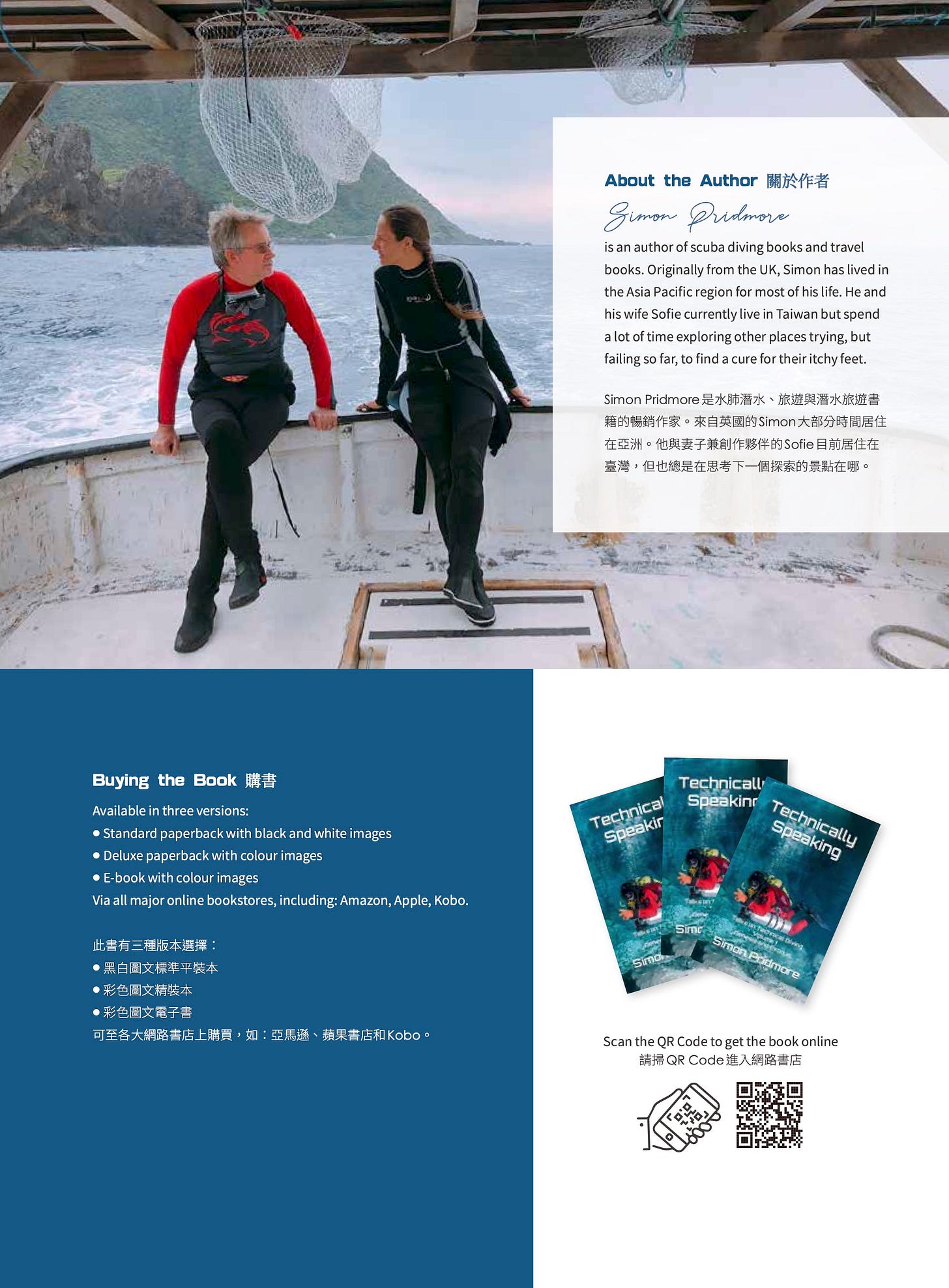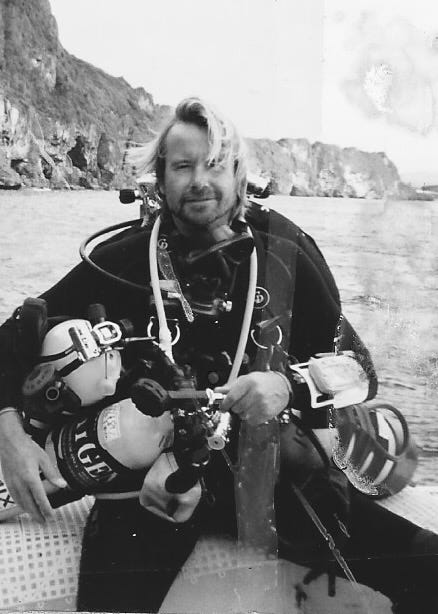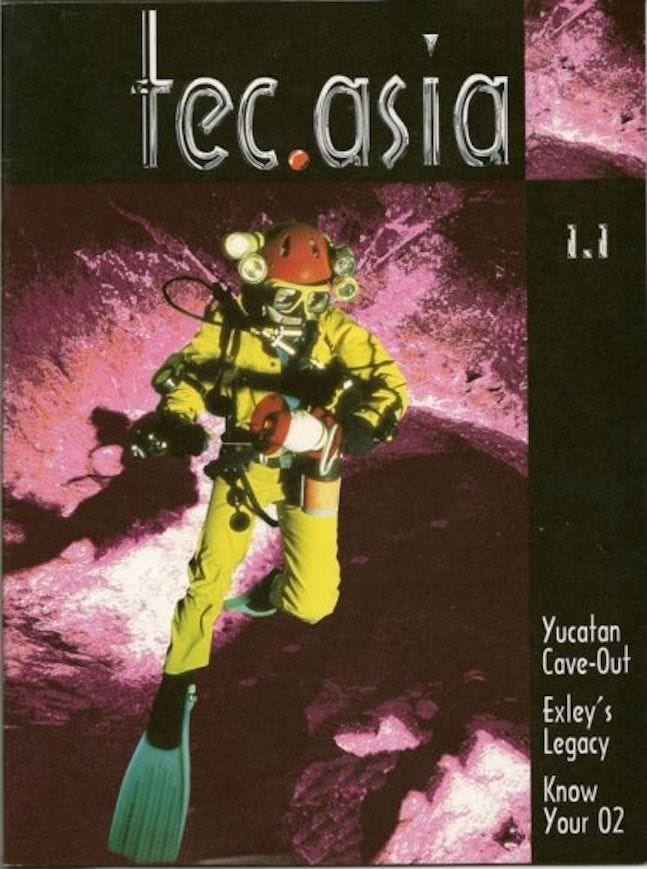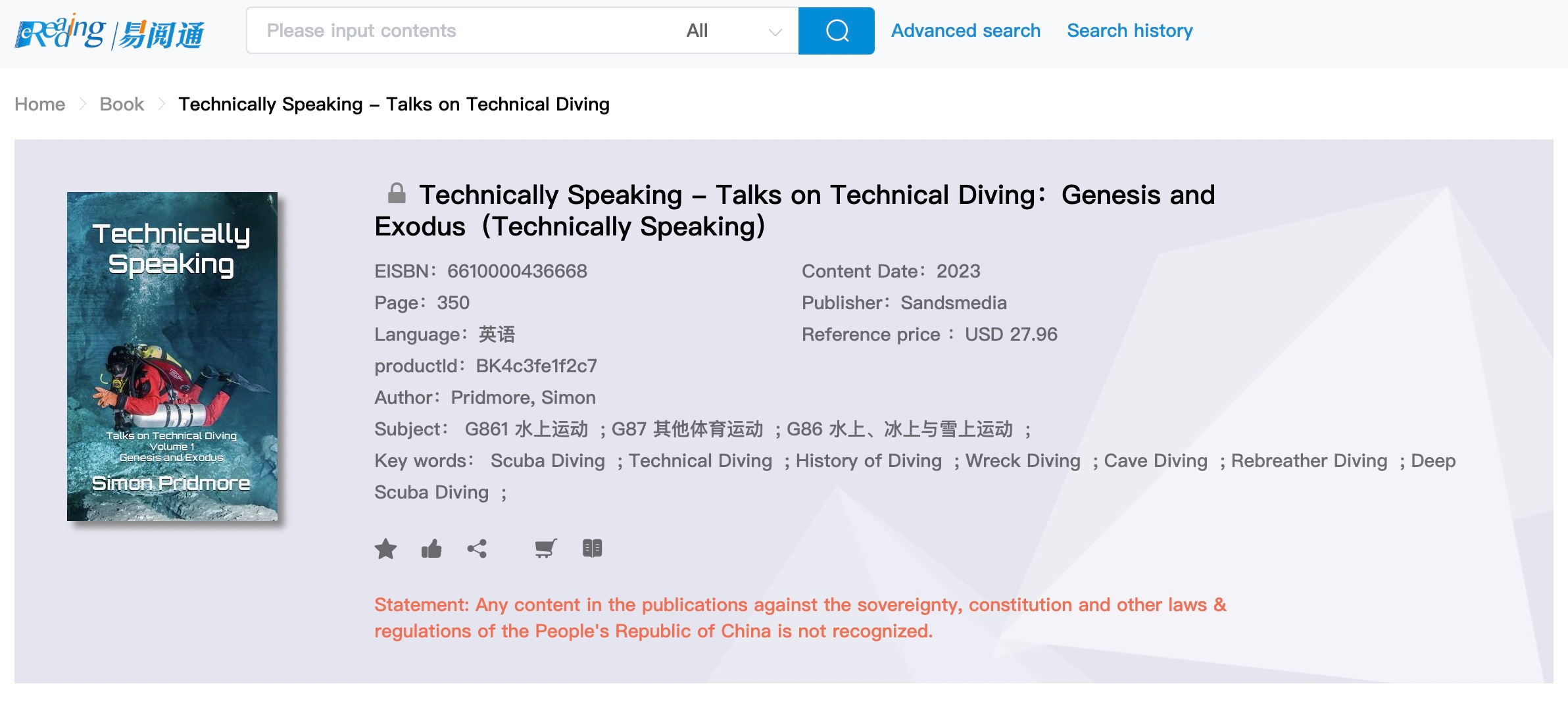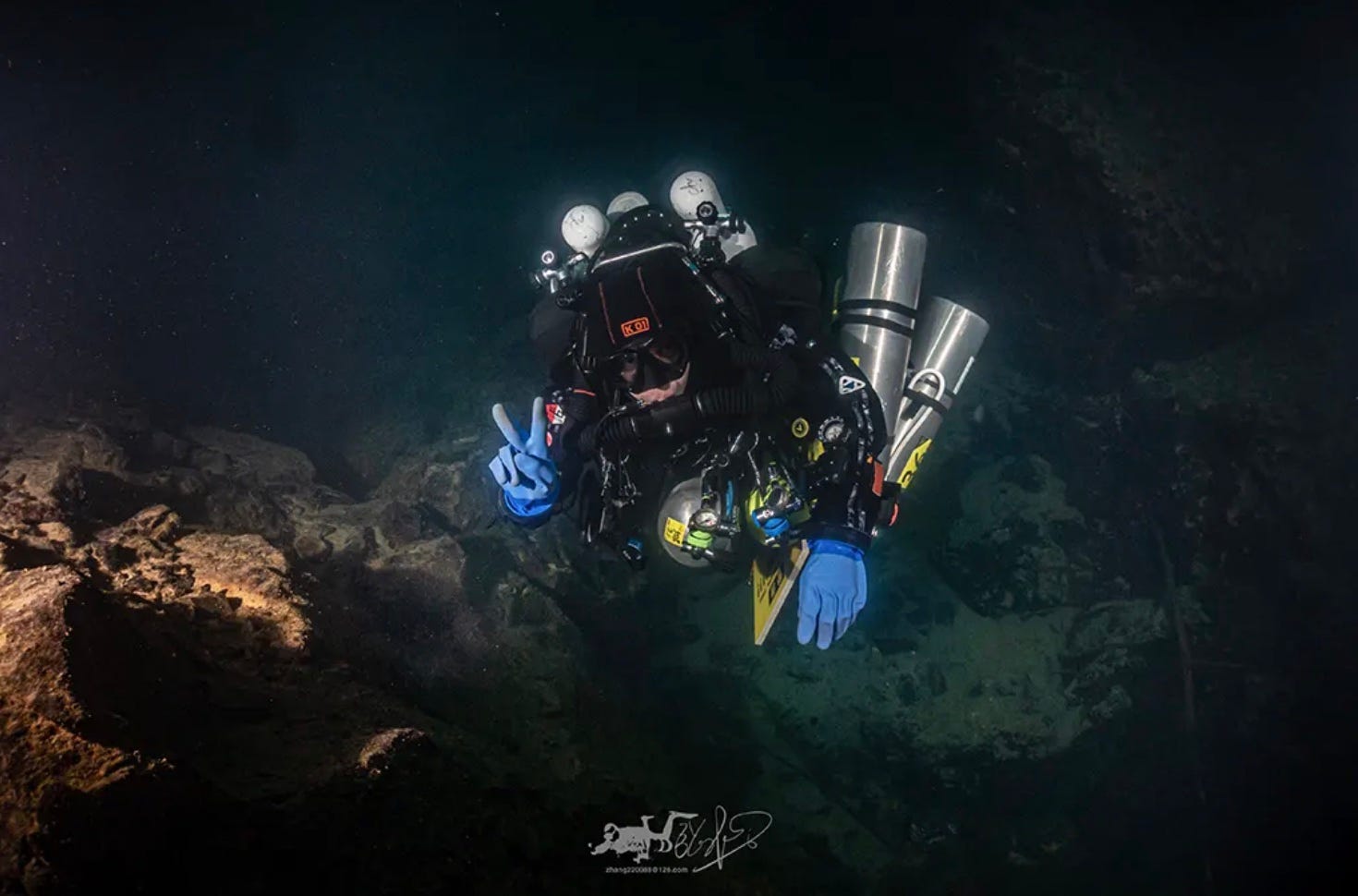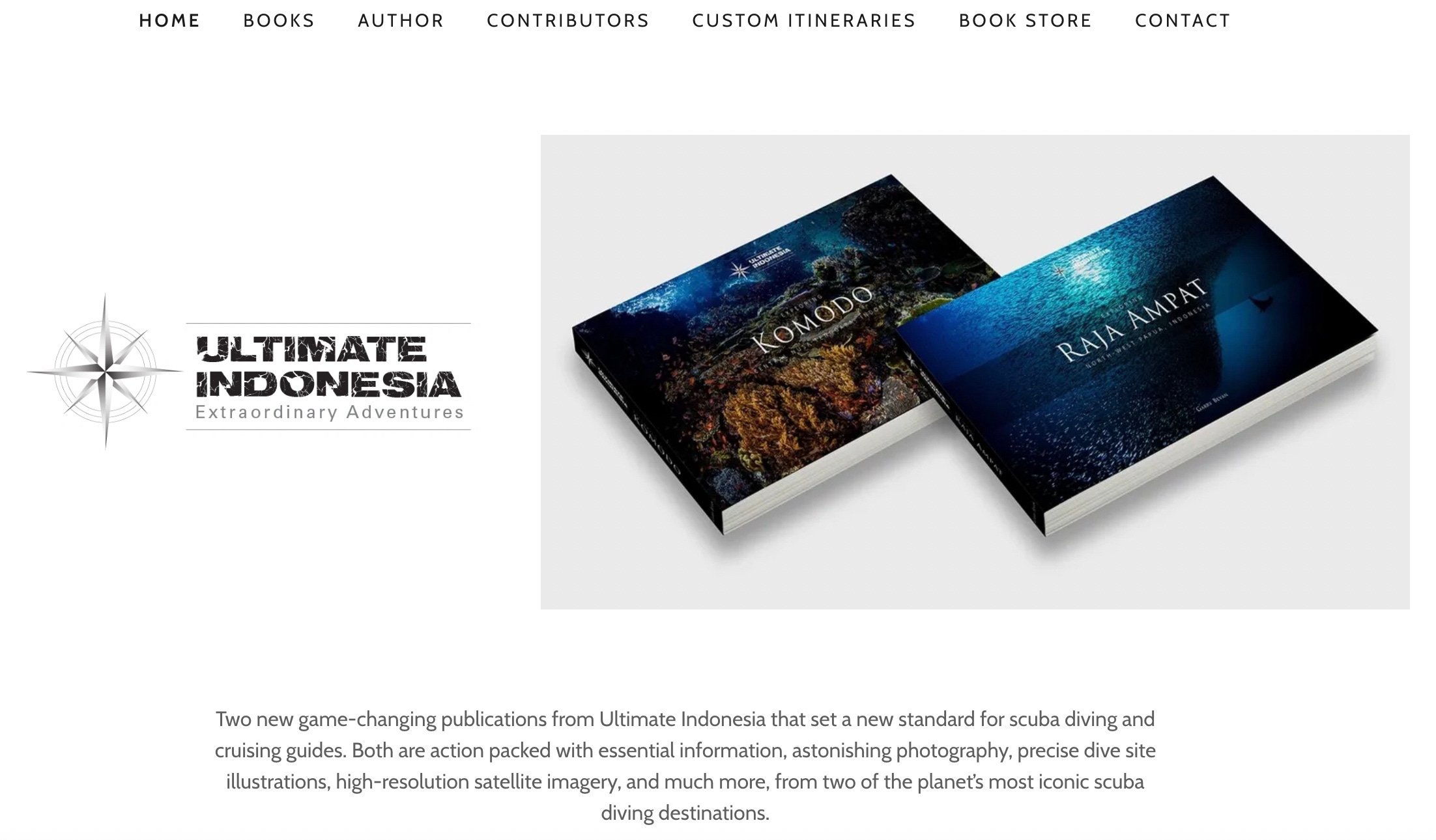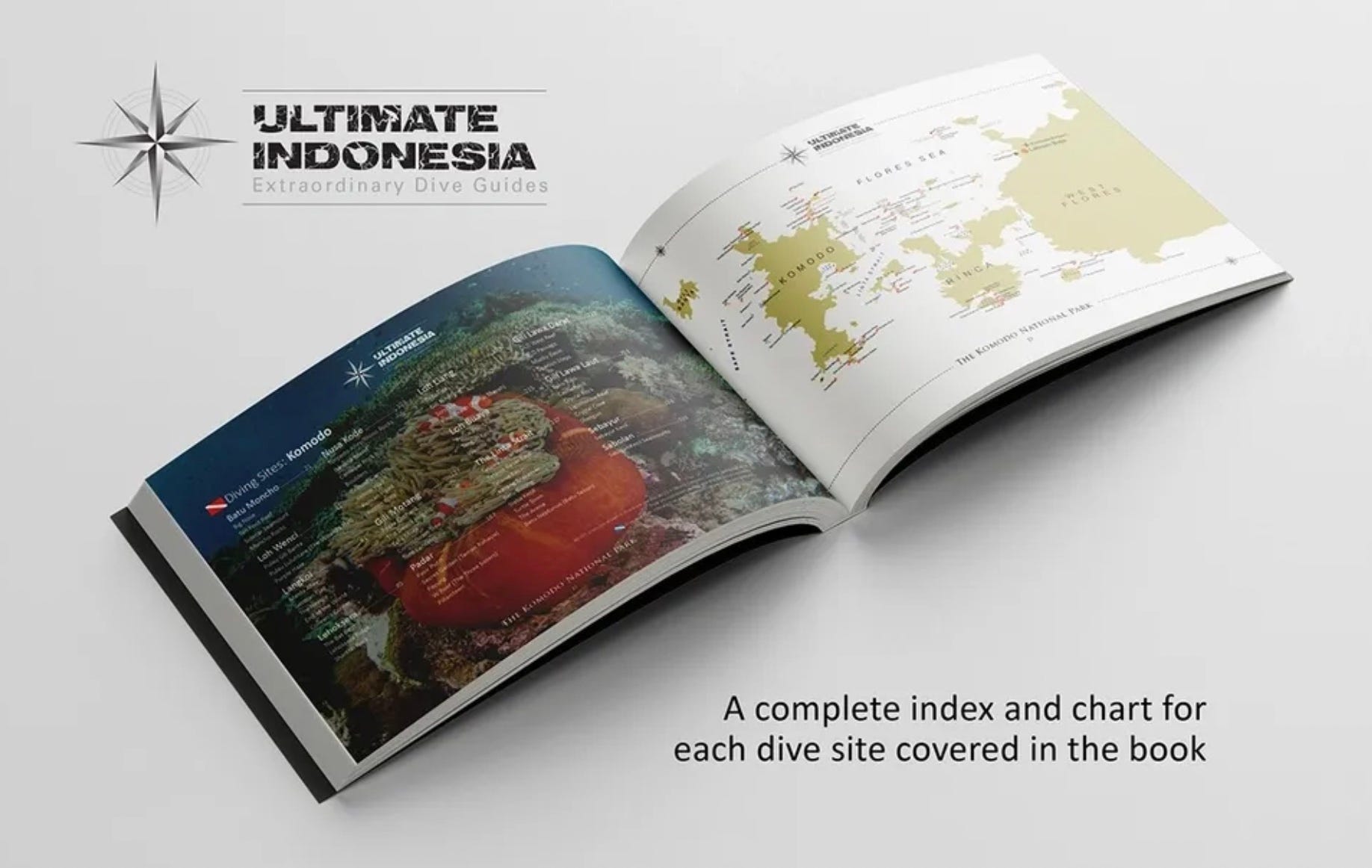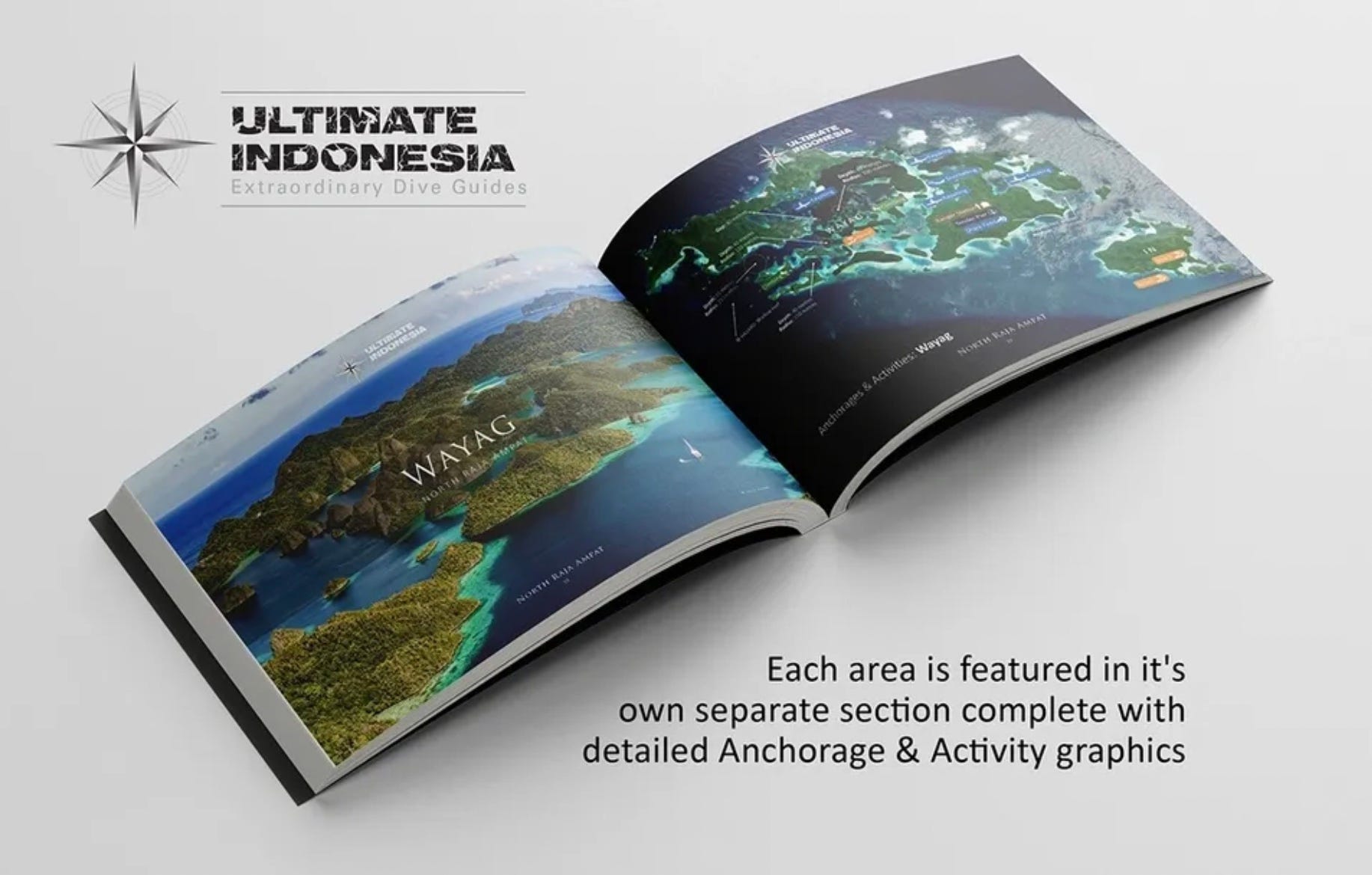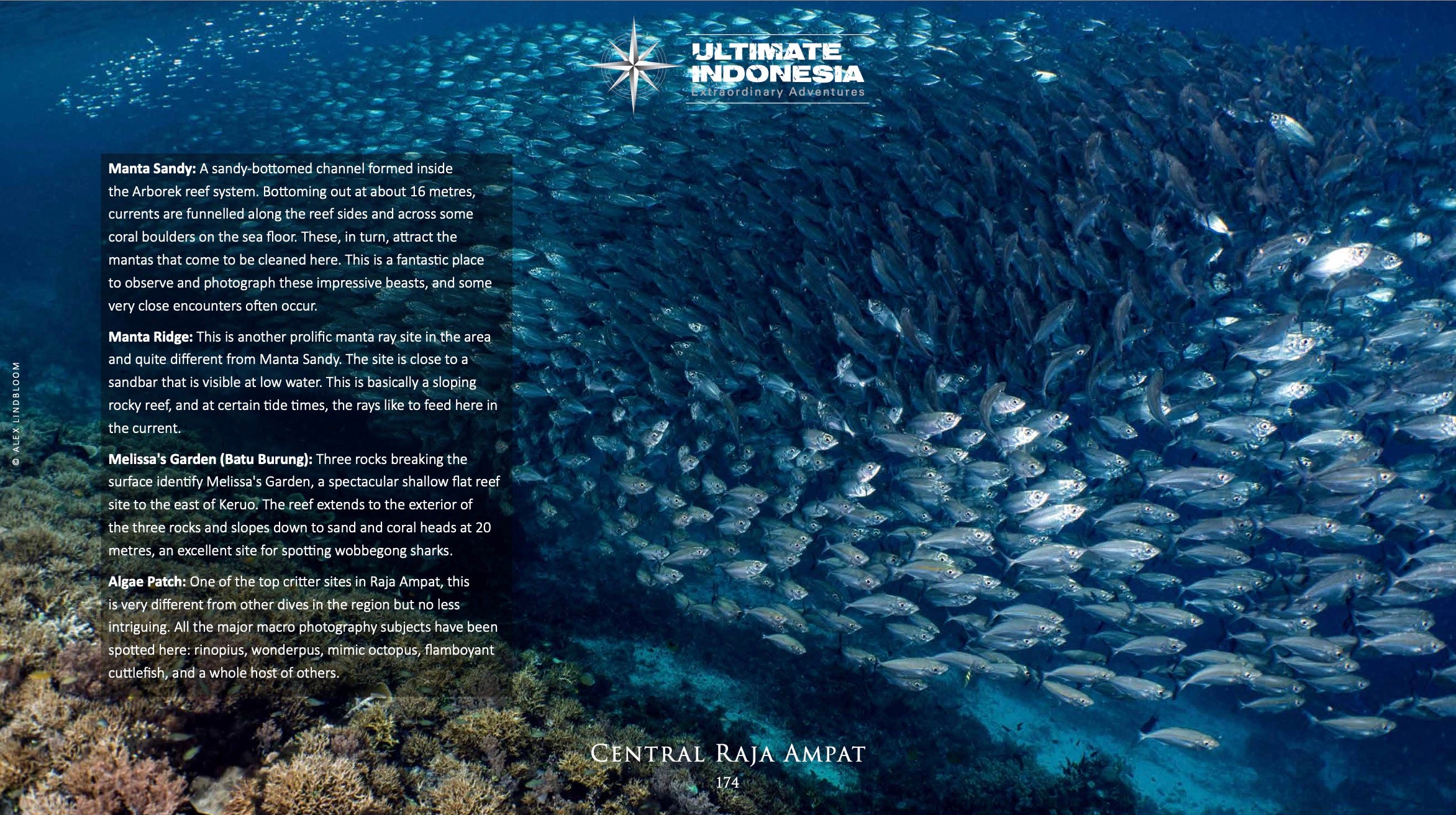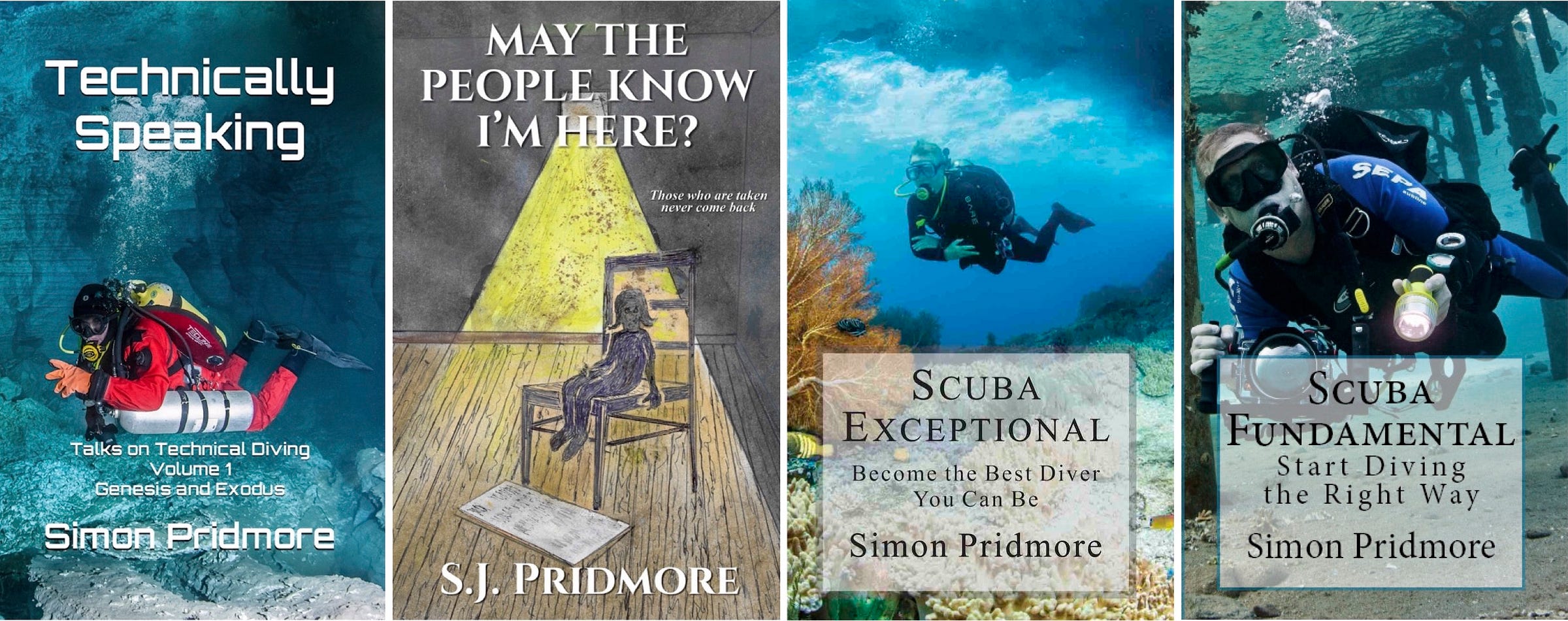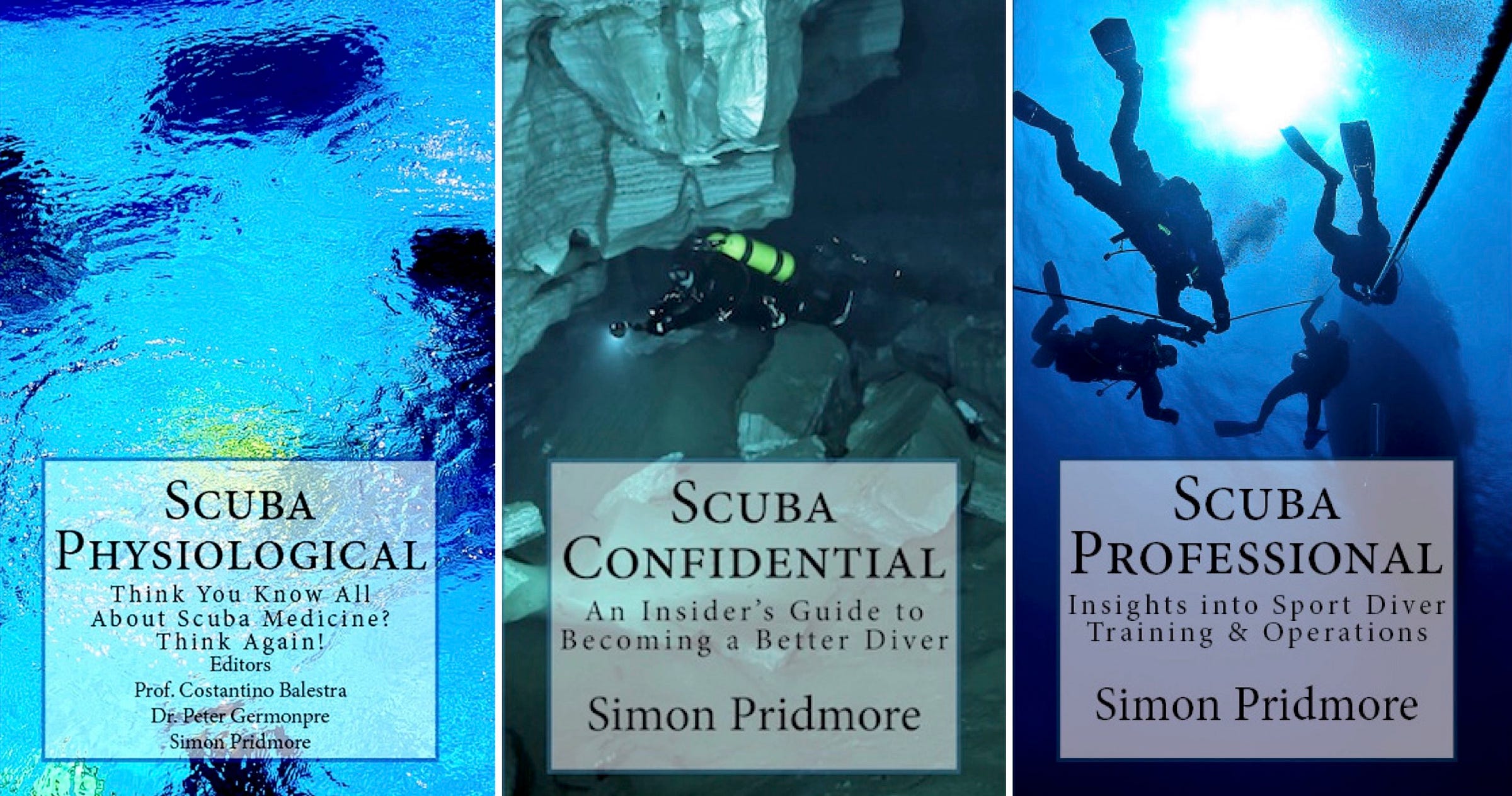Scuba Conversational - Issue #60
Micronesia Diving
My first visit to Micronesia in early 1992 was life-changing. And you can’t usually say that about a dive trip.
Micronesia wasn’t where I learned to dive. I’d been diving for 10 years before heading out on a month-long Air Mike pass to Guam, Palau, Yap, Guam again, Truk, Pohnpei, Guam yet again, and Saipan.
But, before departing Hong Kong on the first leg of that journey, I was planning for my forthcoming inevitable change of career in 1997 by taking advanced Chinese lessons and a post-grad degree in Politics at Hong Kong University in what spare time I had away from my main job in the Government’s Security Branch.
When I came back from Micronesia, everything changed. Somewhere along the way, probably on a plane between islands, I’d had an epiphany. I canned all the classes and embarked on a new life plan. I signed up as an unpaid staff member in the evenings and weekends at Mandarin Divers (exchanging one type of Mandarin for another), traded my sweat equity for their knowledge, and started accruing professional qualifications and experience, intending to open a dive shop somewhere (probably in Micronesia), in 5 years, when I would be out of a job on Hong Kong.
That month in Micronesia was life-altering in many ways. Primarily, it made me realise what I really wanted to do at this stage of my life. Second, it showed me a world of wide, wild oceans and remote archipelagos that appealed to me enormously. I wanted to be part of all that.
Third, I met people whose own journey I found inspirational. They now belonged to the Pacific islands, but they hadn’t started there. Their example was one I could follow. Amongst others, I dived with Sam Scott in Palau, when he was just a one-man band, doing everything himself, long before Sams Dive Tours became world-famous. He came to Micronesia following his Mom after she married a Palauan man, took one look at it, and stayed.
I also spent a few days with Bob and Patti Arthur at The Village in Pohnpei. They had been living in California before Bob returned from a trip to the South Pacific and announced that he wanted to up sticks and move the family to a small island in the middle of the world’s largest ocean and build a hotel.
I also dived with Clark Graham, who had a small place called Micronesia Aquatics, just inside the main gate to the Blue Lagoon Resort on Truk. Like many other Americans in the islands, he had come out as a Peace Corps volunteer and decided that he would stay there forever.
And passing through Guam, I came across pictures and stories by Tim Rock, who had also discovered his true calling and abandoned the snowy wastes of the Northern US for the endless summer of the Marianas. More about his pictures and stories below.
So, in 1997, I left Hong Kong for Guam to start Professional Sports Divers and over the following years made many follow-up trips to Micronesia’s far-flung diving outposts, including several return trips to the islands that had first attracted me and others too, such as Kosrae, Kwajalein, Majuro and even Bikini Atoll, where we would run a dive week every year.
From Guam, Truk Lagoon was a 90-minute flight away. You can pop over any time. Palau isn’t much further. You get blasé about having some of the best diving in the world on your doorstep. But then you leave that world and it’s a lot harder to get there. A LOT harder!
Sofie and I were in Palau in 2019 - my first trip there for over 15 years - to research and write The Diver Who Fell from the Sky, the biography of pioneer Francis Toribiong. But I haven’t been back to Truk or Pohnpei for well over twenty years now and I am excited about our trip in June.
We’ll be doing 21 wreck dives over 8 days and exploring rarely-visited islands in the lagoon too. Truk is mostly about the shipwrecks, naturally, but there are other fascinating and rarely-seen aspects to this remotest of outposts. Click the picture for more details. Blue Lagoon still has rooms available at the resort for this week, so if you want to join us, let me or Tim know and we’ll add you to the group.
Truk Lagoon Wreck Diving and Island Exploration June 2024
Here’s the excellent 5-minute YouTube video Tim made for Truk Lagoon resort.
Tim’s been busy updating his Truk, Pohnpei & Kosrae dive guide too. Again, he reveals what else the lagoon and its islands and outer reef have to offer as well as fabulous wreck diving.
This material has appeared in several forms over the decades, first as part of Tim’s original black and white Guam and Micronesia book, then as part of the Pisces series, then a Lonely Planet book and finally a Diving & Snorkeling guide. The Truk pages need to be updated more often than most as the situation and appearance of the wrecks in the lagoon continue to change. It is now 70 years since Operation Hailstone took them all to the bottom and the ocean continues its gradual process of assimilation, turning the ships into reefs.
Diving & Snorkeling Guide to Truk Lagoon, Pohnpei & Kosrae
Diving & Snorkeling Guide to Truk Lagoon, Pohnpei & Kosrae 2024
The new book is available, as of yesterday, via Amazon worldwide
I’ve borrowed a few pictures from the book here to give you a flavour.
Blue Lagoon Resort with a new lick of paint and much, much more besides.
Talking Technically Speaking at ADEX in Singapore
As I write, we are en route to Singapore for the ADEX dive show over the weekend, where I will be giving a talk on the early history of technical diving as part of this year’s Tek Asia programme, as well as taking part in the Book Festival. Here are the promo ads, with Andrey Bizyukin’s superb picture of me at Batu Rufus in Raja Ampat again featuring prominently.
My Crucible talk will begin something like this…
30 years ago, this show, which was then called ADEC, was the venue where the original technical divers from the USA and the UK first met their counterparts in Asia. This was the crucible where technical diving took off in Asia.
But we were late on the scene. A few years earlier, five people in the USA from very different backgrounds interacted, coincided, and bumped off each other like molecules in a chemical reaction and created the environment in which the thing that we now call technical diving could grow.
One of the people was a science guru. One was a true revolutionary. The others were explorers. All were pioneers and all had unconventional methods.
It is curious that, by the time technical diving became part of the mainstream, for a variety of reasons, none of these five people was still part of the scene. One had been lost. Others had drifted away. They had changed the sport diving world but were no longer part of it.
This is their story.
While most of the events I cover in this weekend’s talks occurred before the term technical diving came into popular use, nevertheless, as you can see from my intro to Crucible above, the 30th anniversary of Asia having its own dive expo for the first time has reminded me that the early days of ADEC/ADEX coincided with the arrival of technical diving in Asia. From the beginning, the show quickly became the fulcrum about which the world of scuba diving in this region turned in those days, attracting key figures like Tom Mount, Wings Stocks, Michael Menduno and Rob Palmer to travel East and rub shoulders, share their expertise, and learn the etiquette of nightlife Asian-style from divers who would become leaders in the Asian technical diving community such as Khoo Soo-seng, and David Strike.
So I dug out a few old photos from those days for my book introduction, some of which appeared in an article in EZDIVE last year.
Here’s another “new” old one. It’s a shame more haven’t survived. But you can see the marks on this picture from flooding or burning or both, I’ve no idea. It only just survived!
And, while we are back in the 1990s, this is the cover of the volume 1 issue 1 of tec.asia magazine - there only ever were two issues - featuring articles by me and Strikey, among others. These were exciting times and I hope the Technically Speaking book and my talks over this weekend convey a little of that.
By the way, I thought you might be interested to see how wide the fame of Technically Speaking has spread. Someone drew my attention to the fact that it has been imported into the PRC by an organisation called China National Publications (Import & Export) and is on sale there, with an interesting disclaimer attached.
I think I’m pretty safe. I can’t imagine anyone would find anything politically offensive in the pages of Technically Speaking. Unfortunately, this is the English version, which limits its market considerably. I’d love to have a version in Chinese. If you are reading this and you have the means of producing one, message me!
Tech Diving in China
There is technical diving in China.
InDepth magazine recently published an excellent piece written by Chen Qian, a leading Chinese cave diver.
Here he is in an image by Kevin Zhang taken from the article.
And this is the InDepth article.
My Personal Experiences with HPNS on Five Sub-200 meter Dives
Chen’s clear, open and honest, writing style is refreshing. His accomplishments are mind-boggling, yet his approach to extreme diving is thoughtful and considerate.
Here is a short clip.
On my last 258 m/846 ft dive which I conducted on March 30, 2023, I used faster descent rates, averaging around 25 m/82 ft-per-minute. The tremors during the descent were minor and acceptable. But when I reached 238 m/781 ft, my hands were trembling and my movements started to become less efficient. Fortunately, the beautiful slopes and the horizontal cave structures from 230 m to 250 m (755–820 ft) offered some relief, and with enough bottom time to swim a bit which relieved some tension and put me in good spirits. Although I realized the tremors were uncontrollable but slowing down, my movements and focusing my mind did help to minimize the negative effects of them.
Those figures are not a misprint. They may, however, lead you to premature judgement. I would recommend reading the InDepth piece in its entirety, including the editor’s introductory summary. What we are seeing here is a diver with an unusual perspective and motivation. It is interesting and I thought it was worth sharing with you.
But I would echo the editor’s caveat:
Don’t try this at home…
Raja Ampat/Komodo
In the previous issue of this newsletter, I mentioned Garry Bevan’s stunning new dive book on Raja Ampat and promised to let you know when his website was up and running. Here it is.
Garry's Ultimate Indonesia page
Click the link or the image to visit.
I published some screenshots from the book in the last issue of Scuba Conversational, but on his website, Garry has added a few more. Here are a couple of samples.
You know how good this would look on your coffee table.
I’ll just sneak this Alex Lindbloom picture in again. For two reasons: 1. It is a truly magnificent shot, and 2. We had the astonishing good fortune to be surrounded by a similarly enormous school for an entire hour at Melissa’s Garden earlier this year. What a memory!
Last but not Least
I know this Scuba Conversational is very book-heavy - reflecting this weekend’s ADEX Book Festival, I guess. I am planning a wreck special for the next issue.
You may recall that my novel May the People Know I’m Here? was being translated into Spanish. Well, it’s out - actually, it’s been out for a few months but some of the sales sites took a while to get it up online.
I am extremely grateful to Ana Esther Rodríguez Liébana for taking on this challenging project.
This is it.
Here it is in Apple Books
Here is in Everand (Scribd)
And here it is on the Amazon ES site.
I have had some wonderful reviews of the original book. This one was posted recently on Amazon.
This book was difficult to put down. From the first page I was drawn into the labyrinthine twists and turns leading to the fate of its characters. I needed to know who was the girl in the attic, who had placed her there, and why. In a spellbinding weave of narrative and history S J Pridmore slowly and ingeniously reveals the answers and we learn what happens when ordinary people are plunged from their everyday lives into a world of deceit and degradation.
But the real force of the book is its withering clarity. To his great credit, S J Pridmore spares us sentimentality and lets the story speak for itself. We share with Anka her perplexity and confusion. We recoil with Rachel from the rag-tag guard crew, loathed by superiors and charges alike. We hear of quite extraordinary kindness from an unlikely source and, at the last, learn that some ties are never quite broken.
It is a great truth that as we grow older memories from the distant past take on new clarity. This book is a fictional work based on the testimony of frail survivors, eager to reveal with a power once denied them what they have lived through. There have been other books but the difference here lies in the skill of the writer to transport you the reader to each time and place and hold you there captive in its thrall.
It has haunted me, and I am left wanting to read it again.
All very encouraging, as you can imagine. Naturally, I want to do further novels. Watch this space. I have another dive book in process right now, and then I’ll change tack again for a while. (And probably come back to dive books again later.)
Right, that’s it from me for this issue. Chat with you again next month in Scuba Conversational #61.

